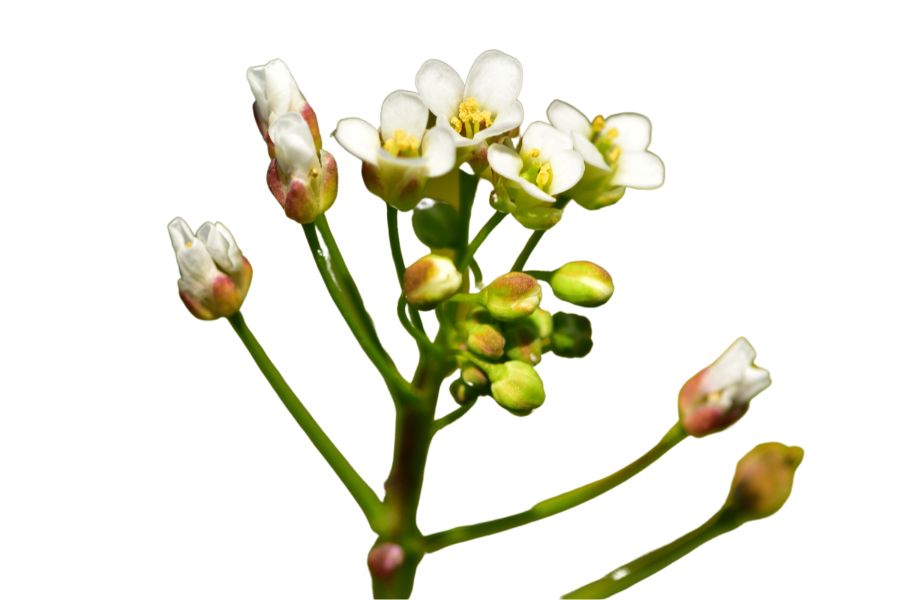South Dakota hides edible plants across its varied landscape. The state grows plenty of wild foods that anyone can collect with the right knowledge. Foraging connects people to traditional food sources that predate grocery stores.
Hunting for wild edibles makes hiking and camping extra rewarding. Many nutritious plants grow in prairies, woodlands, and near water throughout the state. Each season brings different plants worth gathering.
Learning proper plant identification keeps foragers safe. Some edible plants have toxic lookalikes that must be avoided. Local experts, workshops, and reliable field guides teach the differences between safe and harmful species.
Wild berries, greens, roots, and nuts fill South Dakota’s natural areas. The Black Hills offer different plants than eastern river bottoms or central grasslands. Native plants provide food while teaching about the land’s history and ecology.
What We Cover In This Article:
- The Edible Plants Found in the State
- Toxic Plants That Look Like Edible Plants
- How to Get the Best Results Foraging
- Where to Find Forageables in the State
- Peak Foraging Seasons
- The extensive local experience and understanding of our team
- Input from multiple local foragers and foraging groups
- The accessibility of the various locations
- Safety and potential hazards when collecting
- Private and public locations
- A desire to include locations for both experienced foragers and those who are just starting out
Using these weights we think we’ve put together the best list out there for just about any forager to be successful!
A Quick Reminder
Before we get into the specifics about where and how to find these plants and mushrooms, we want to be clear that before ingesting any wild plant or mushroom, it should be identified with 100% certainty as edible by someone qualified and experienced in mushroom and plant identification, such as a professional mycologist or an expert forager. Misidentification can lead to serious illness or death.
All plants and mushrooms have the potential to cause severe adverse reactions in certain individuals, even death. If you are consuming wild foragables, it is crucial to cook them thoroughly and properly and only eat a small portion to test for personal tolerance. Some people may have allergies or sensitivities to specific mushrooms and plants, even if they are considered safe for others.
The information provided in this article is for general informational and educational purposes only. Foraging involves inherent risks.
The Edible Plants Found in the State
Wild plants found across the state can add fresh, seasonal ingredients to your meals:
Chokecherry (Prunus virginiana)
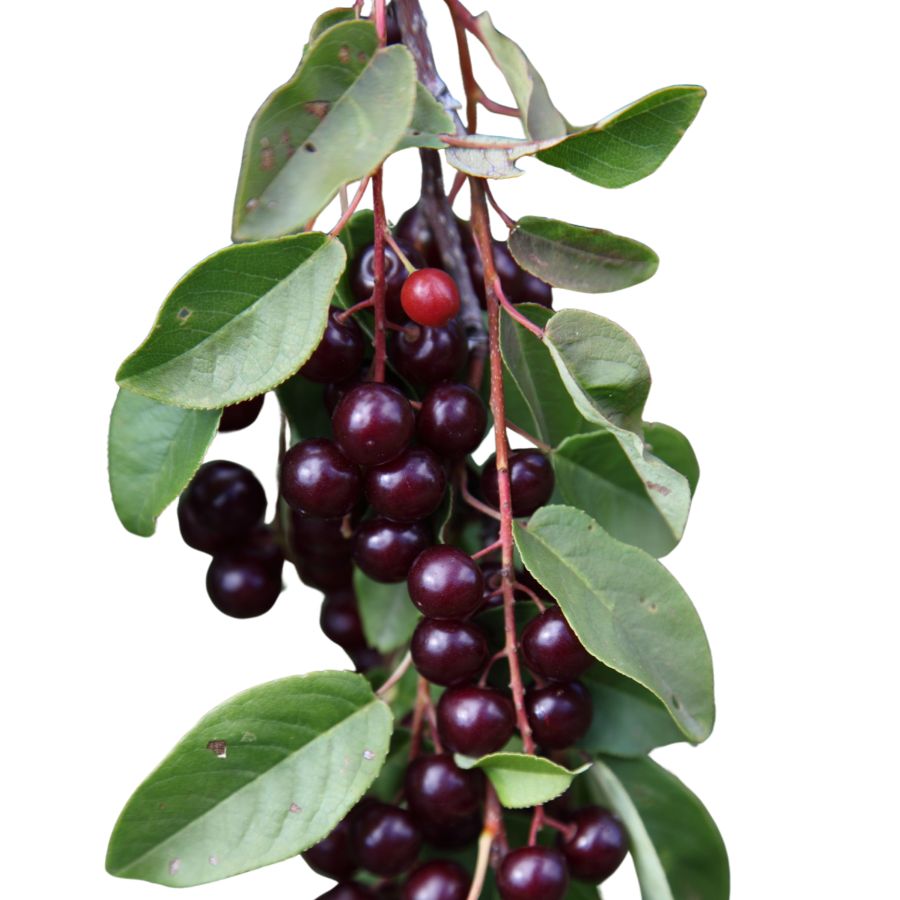
Clusters of dark berries hanging from a woody shrub usually indicate chokecherries, especially when the leaves are oval with finely toothed edges. These berries turn from red to deep purple or black when they’re ready to eat.
Chokecherries are rarely eaten raw due to their bitterness, but they shine in cooked recipes like preserves, sauces, or even homemade wine. Boiling the fruit and straining it helps separate the pulp from the inedible seeds.
It’s easy to mix up chokecherries with other wild cherries, but true chokecherries have longer, narrower leaves and a more astringent taste. Avoid anything with rounder, solitary berries or a sweet scent without the signature tartness.
Their texture is slightly gritty around the pit, and the flavor improves significantly with sugar and heat. A strong astringent quality dominates the raw berry, but the processed pulp becomes rich and deeply flavored.
American Plum (Prunus americana)
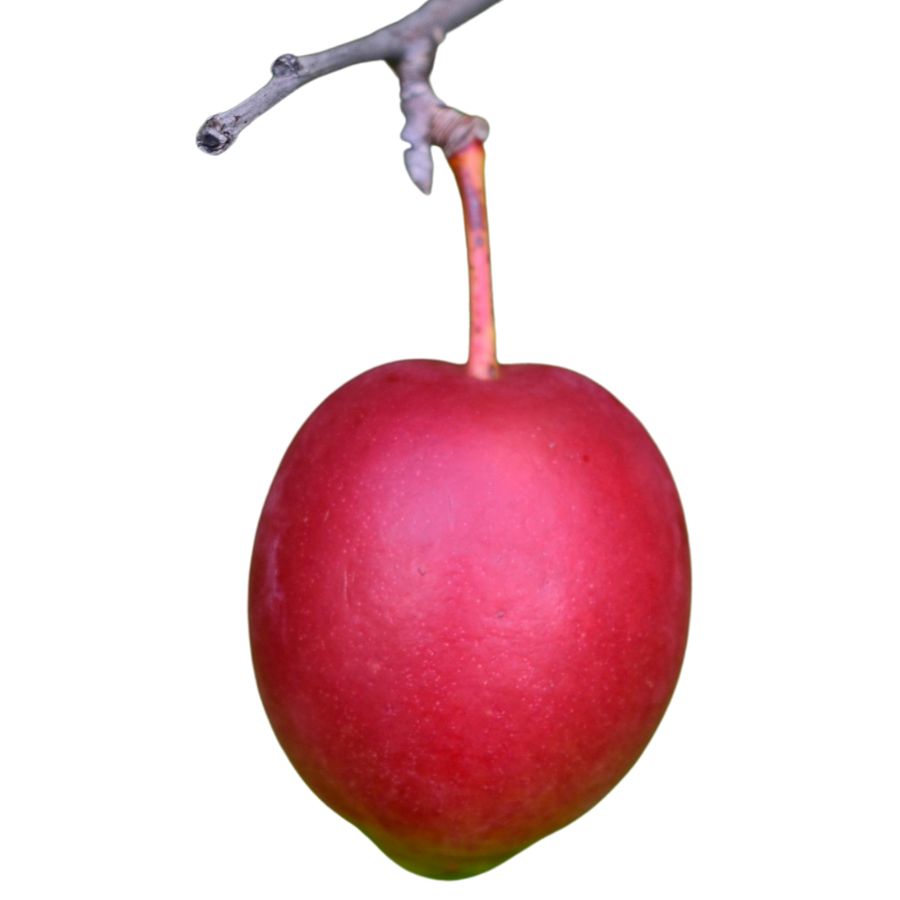
American plum, also called wild plum or river plum, produces small round fruits that range in color from yellow to deep red when ripe. The skin is slightly tart, but the flesh is soft, juicy, and sweet with a hint of spice.
You can eat the fruit raw or turn it into jellies, sauces, or wines—its natural pectin makes it ideal for preserves. Just avoid the seeds and leaves, which contain compounds that can release cyanide when crushed or chewed.
Its bark is rough and dark, and the branches often have short, sharp spines. The plant’s simple oval leaves and white spring flowers help distinguish it from less edible lookalikes like black cherry, which has longer, narrower leaves with a more bitter fruit.
If the fruit has a strong bitter almond smell when crushed, steer clear—it might be a different species altogether. American plum fruit clusters tend to be smaller and more tightly packed than those of cultivated varieties.
Ground Cherry (Physalis longifolia)
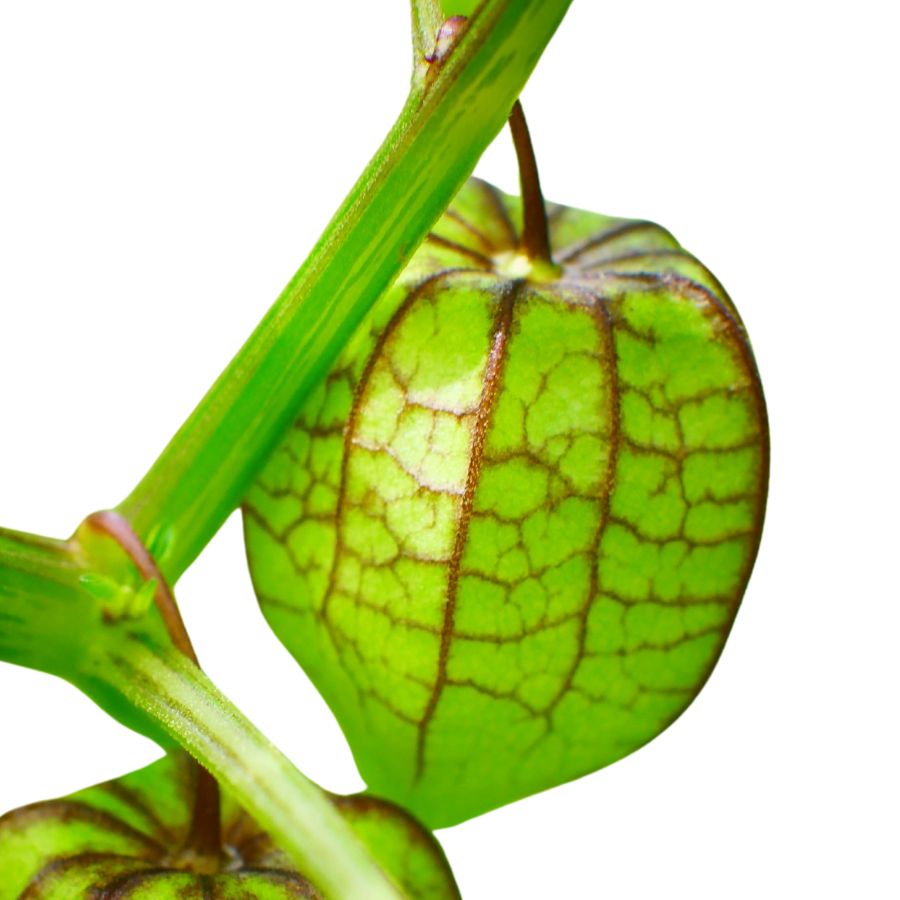
Bright orange-yellow berries encased in papery husks make ground cherries instantly recognizable to experienced foragers. These small plants belong to the same family as tomatoes, growing low to the ground with slightly fuzzy leaves and tiny yellow flowers.
When ripe, the fruits fall to the ground, hence their name. The taste is surprisingly complex, offering hints of pineapple, vanilla, and tomato in one small package.
Ground cherries contain edible seeds and juicy flesh inside their husks. The papery covering and unripe green fruits should be avoided as they contain solanine, which can cause stomach upset.
While deadly nightshade belongs to the same plant family, ground cherries are easily distinguished by their distinctive husks. Always ensure the fruits are fully ripe, indicated by their yellow-orange color and sweet smell. They’re wonderful eaten fresh but also make excellent jams, pies, and salsas.
Jerusalem Artichoke (Helianthus tuberosus)
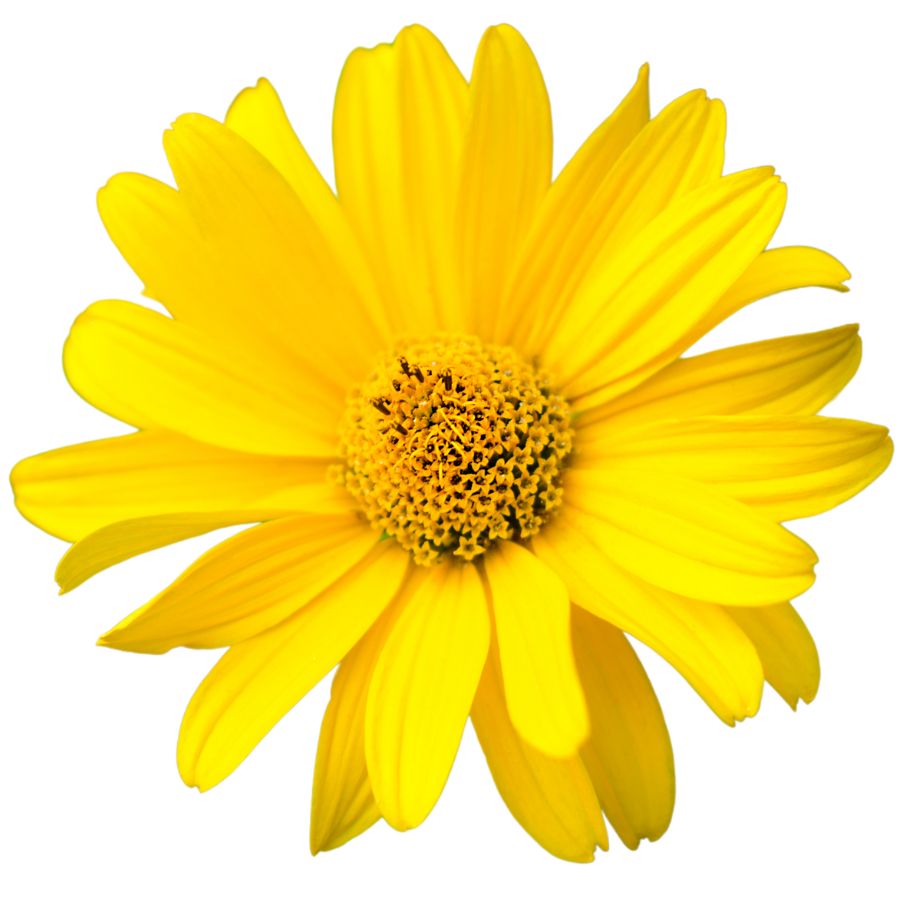
Jerusalem artichoke grows tall with sunflower-like blooms and has knobby underground tubers. The tubers are tan or reddish and look a bit like ginger root, though they belong to the sunflower family.
The part you’re after is the tuber, which has a nutty, slightly sweet flavor and a crisp texture when raw. You can roast, sauté, boil, or mash them like potatoes, and they hold their shape well in soups and stir-fries.
Some people experience gas or bloating after eating sunchokes due to the inulin they contain, so it’s a good idea to try a small amount first. Cooking them thoroughly can help reduce the chances of digestive discomfort.
Sunchokes don’t have many dangerous lookalikes, but it’s important not to confuse the plant with other sunflower relatives that don’t produce tubers. The above-ground part resembles a small sunflower, but it’s the knotted, underground tubers that are worth digging up.
Buffalo Berry (Shepherdia argentea)
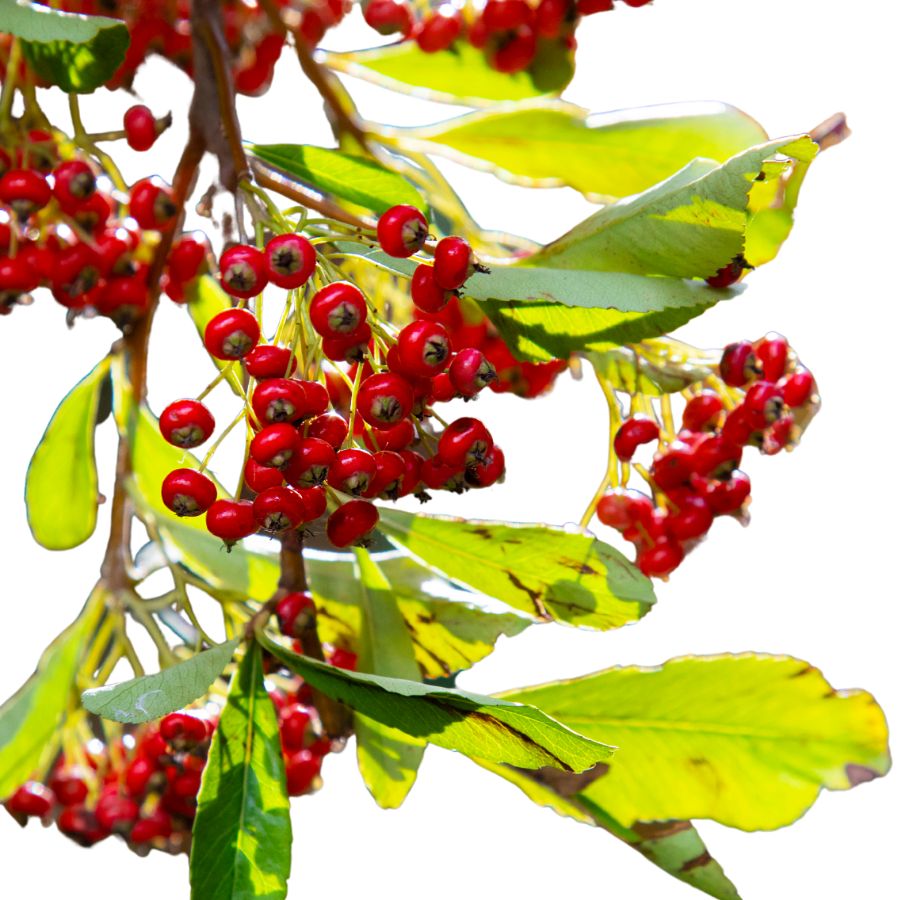
Buffalo berry shrubs stand out in prairie landscapes with their distinctive silver-gray leaves that shimmer in the breeze. These hardy plants grow up to 15 feet tall and produce clusters of bright red berries that persist well into winter, providing important food for wildlife.
The berries have a tart, sometimes bitter flavor that improves after the first frost. Their high pectin content makes them perfect for jellies and preserves. Native American tribes traditionally whipped the berries with sugar to create a frothy dessert.
All parts except the berries should be avoided. The edible fruits are rich in vitamins C and A, plus antioxidants that support immune health.
Buffalo berry is sometimes confused with Russian olive, but buffalo berry has opposite leaf arrangement rather than alternate. When harvesting, bring a sheet to place under branches, then gently tap to release ripe berries. This technique prevents damaging the shrub while maximizing your harvest.
Wild Rose (Rosa woodsii)
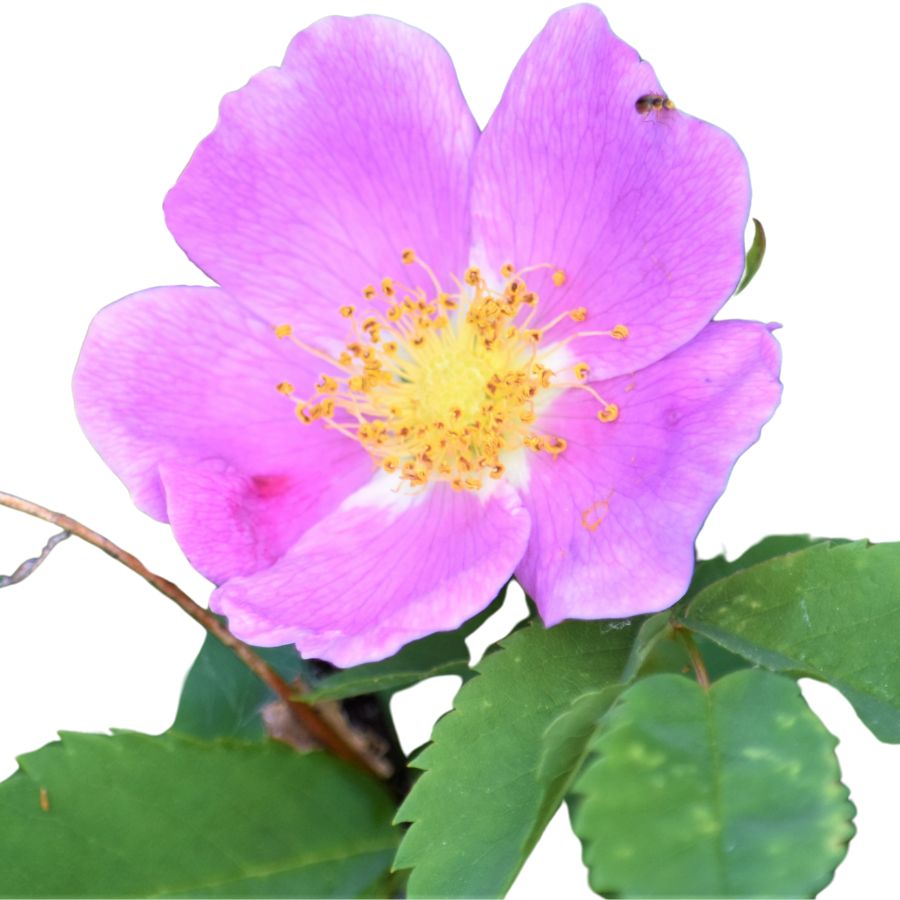
Wild rose shrubs burst into bloom with delicate pink five-petaled flowers that fill the air with sweet fragrance in early summer. These hardy plants feature compound leaves with serrated edges and protective sharp thorns along their stems, later developing bright red fruits called rose hips.
Rose hips contain more vitamin C than oranges, making them valuable food during winter months. Their tangy, slightly sweet flavor works well in teas, jams, and syrups.
When foraging, wear gloves to protect against thorns. The outer flesh of rose hips is edible, but the seeds and tiny hairs inside should be removed as they can irritate the digestive tract.
Wild roses might be confused with multiflora rose, an invasive species, but native wild roses typically have fewer, larger flowers. For the best flavor, collect rose hips after the first frost when they turn bright red and slightly soft. They can be used fresh or dried for later use in immune-boosting teas.
Meadow Garlic (Allium canadense)
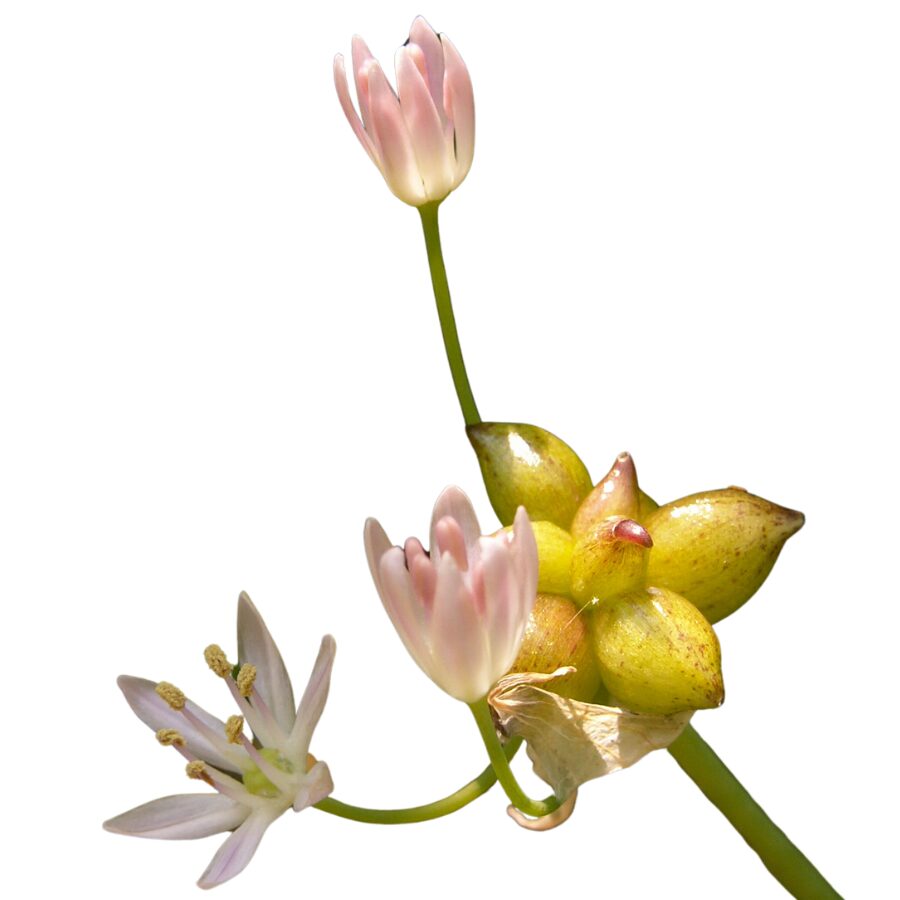
Meadow garlic, also called wild onion or wild garlic, grows in clumps with slender hollow leaves and small pink or white flowers. You’ll recognize it by the onion scent released when you bruise the stems or dig into the bulb.
The edible parts include the bulbs, stems, leaves, and flowers, all of which have a mild onion flavor and crisp texture. Cook them as you would scallions—sautéed, grilled, or tossed raw into salads.
False garlic, or crow poison, looks similar but lacks the onion smell and can be toxic if eaten. Always crush the plant before harvesting—no onion scent means don’t eat it.
Many people pickle the bulbs or chop the greens for compound butters and dips. Be cautious where you forage it though, as plants growing near roadsides or sprayed areas can absorb contaminants.
Lamb’s Quarters (Chenopodium album)
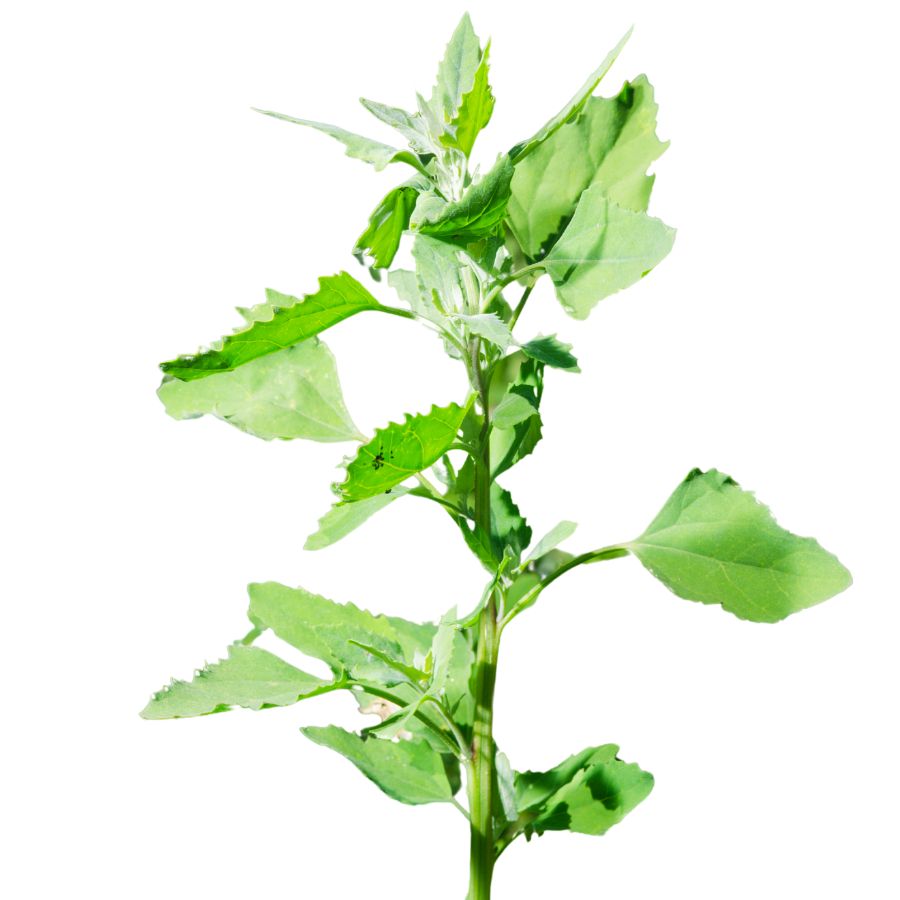
Lamb’s quarters, also called wild spinach and pigweed, has soft green leaves that often look dusted with a white, powdery coating. The leaves are shaped a little like goose feet, with slightly jagged edges and a smooth underside that feels almost velvety when you touch it.
A few plants can be confused with lamb’s quarters, like some types of nightshade, but true lamb’s quarters never have berries and its leaves are usually coated in that distinctive white bloom. Always check that the stems are grooved and not round and smooth like the poisonous lookalikes.
When you taste lamb’s quarters, you will notice it has a mild, slightly nutty flavor that gets richer when cooked. The young leaves, tender stems, and even the seeds are all edible, but you should avoid eating the older stems because they become tough and stringy.
People often sauté lamb’s quarters like spinach, blend it into smoothies, or dry the leaves for later use in soups and stews. It is also rich in oxalates, so you will want to cook it before eating large amounts to avoid any problems.
Amaranth (Amaranthus retroflexus)
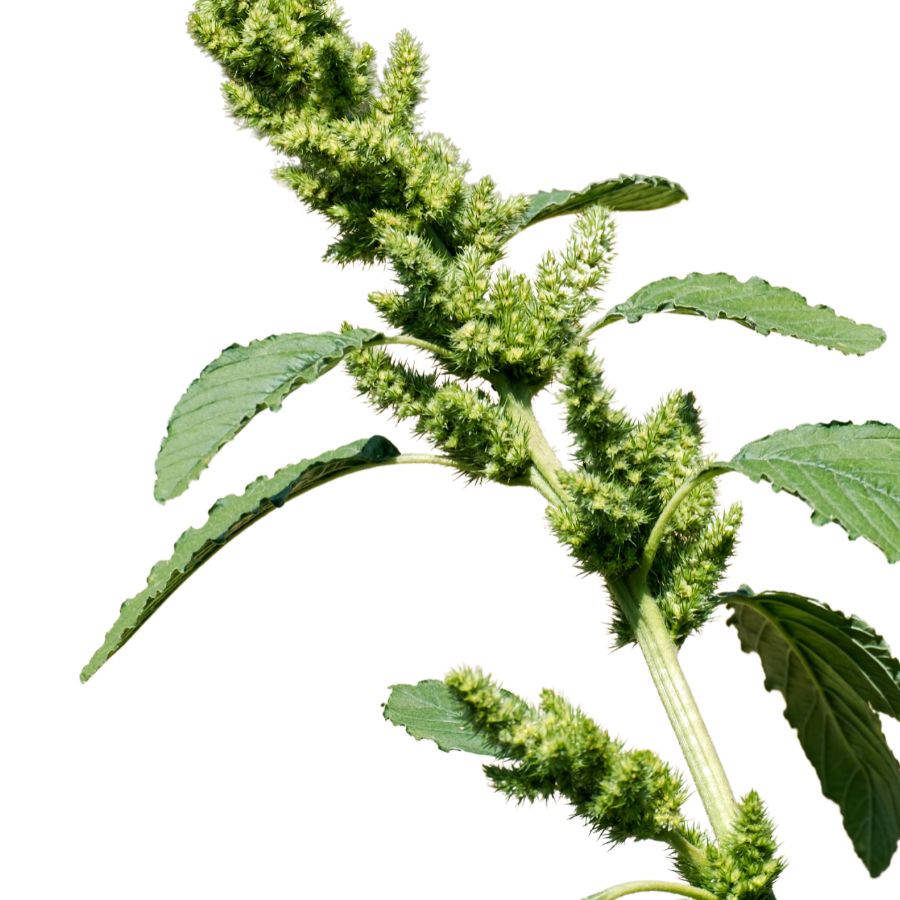
Amaranth features distinctive bristly flower clusters atop reddish stems, growing abundantly in open fields and disturbed areas.
Young leaves taste similar to spinach and can be harvested throughout the growing season for salads or cooking. The seeds, though small, are protein-rich and gluten-free, making them valuable for many diets.
Amaranth is sometimes confused with lamb’s quarters, but amaranth has more pointed leaf tips and distinctive red stems. The entire plant is edible, though older leaves become bitter and tough.
Harvesting seeds requires timing and patience. When the flower heads start to dry and drop seeds, cut and hang them upside down over a collection container. The seeds can be cooked like quinoa, ground into flour, or popped like tiny popcorn. Young leaves are most tender and flavorful before the plant flowers.
Stinging Nettle (Urtica dioica)
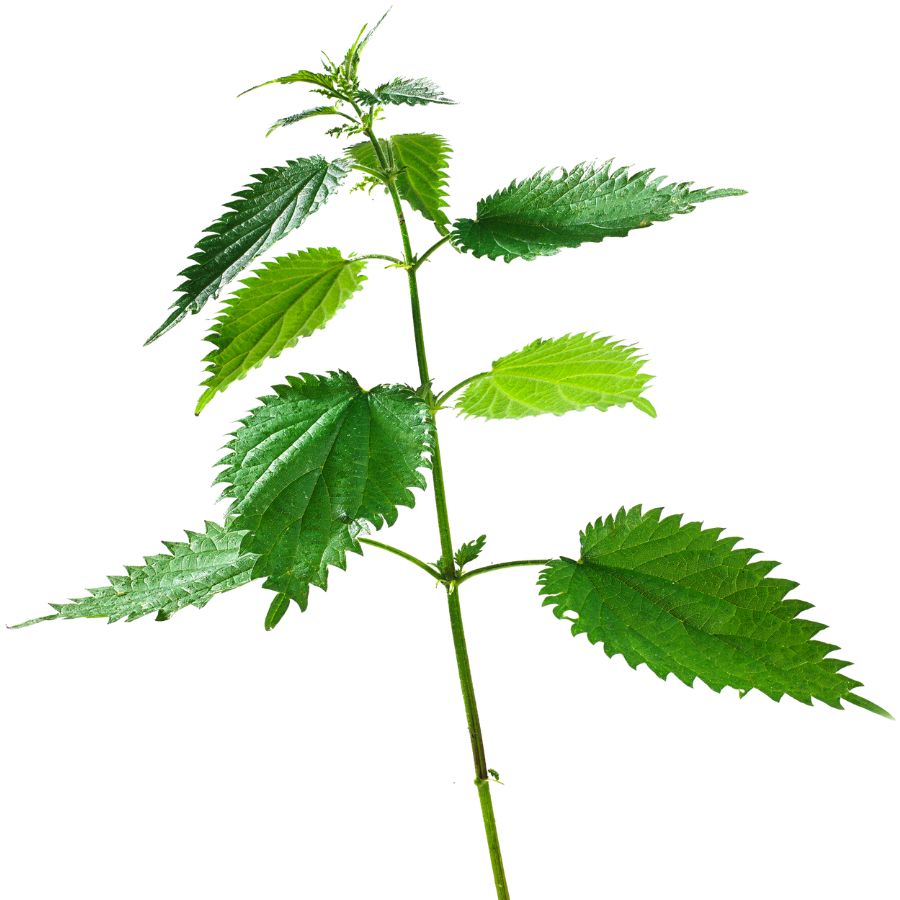
Stinging nettle is also known as burn weed or devil leaf, and it definitely earns those names. The tiny hairs on its leaves and stems can leave a painful, tingling rash if you brush against it raw, so always wear gloves when handling it.
Once it’s cooked or dried, those stingers lose their punch, and the leaves turn mild and slightly earthy in flavor. The texture softens too, making it a solid substitute for spinach in soups, pastas, or even as a simple sauté.
The young leaves and tender tops are what you want to collect. Avoid the tough lower stems and older leaves, which can be gritty or unpleasant to chew.
Some people confuse stinging nettle with purple deadnettle or henbit, but those don’t sting and have more rounded, fuzzy leaves. If the plant doesn’t make your skin react, it’s not stinging nettle.
Fireweed (Chamerion angustifolium)
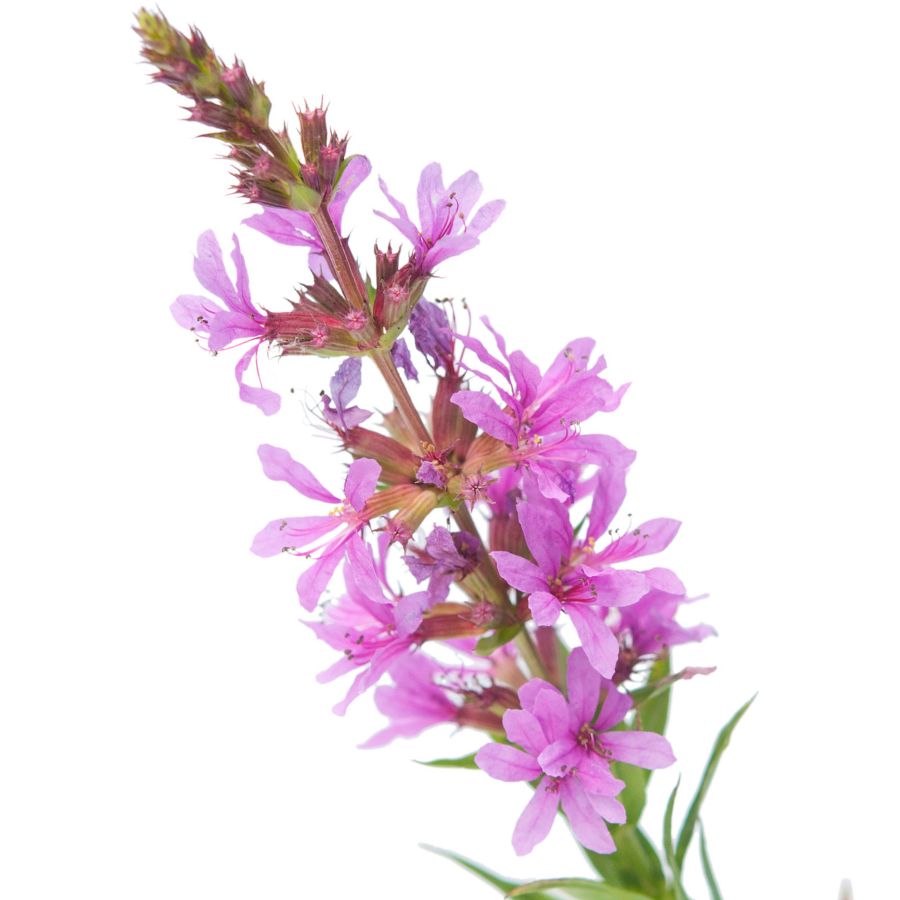
Tall and striking, fireweed produces bright pink-purple flowers that grow in long clusters at the top of the stem. The plant can reach up to six feet tall with lance-shaped leaves that have a distinctive central vein. Fireweed gets its name from being one of the first plants to colonize areas after forest fires.
Young shoots and leaves can be harvested in spring when they’re tender. These parts taste similar to asparagus when cooked and make excellent additions to stir-fries. The flowers produce a sweet nectar that creates a prized honey.
Fireweed is easy to identify with its unique flower spike and smooth-edged leaves that grow alternately along the stem.
The entire plant is edible, though older leaves become bitter and tough. Tea made from dried leaves contains vitamin C and has been used to soothe digestive issues.
Wild Mint (Mentha arvensis)

You’re probably familiar with the strong scent of wild mint, which comes from the essential oils concentrated in its leaves. It has square stems, lance-shaped leaves with slightly toothed edges, and pale lilac flower clusters.
The fresh leaves can be eaten raw, cooked into soups, or muddled into drinks for a crisp flavor. Expect a bright, menthol-like kick with a hint of sweetness.
False mint species like purple deadnettle grow in similar spots but lack the menthol smell and have fuzzy leaves. If the plant doesn’t smell like mint, it probably isn’t.
Stick to the leaves and younger stems for eating because the woody stalks aren’t palatable. Wild mint also holds up well when dried and stored for tea or seasoning.
Goosefoot (Chenopodium berlandieri)
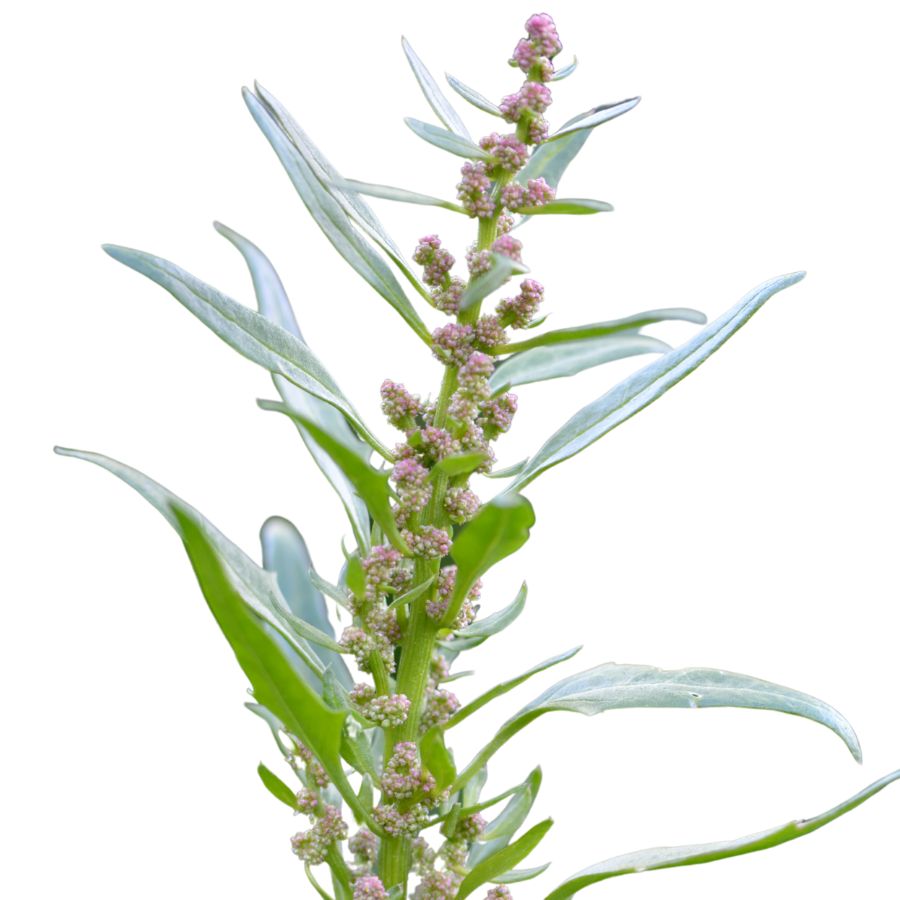
Goosefoot bears triangular, toothed leaves that resemble a goose’s foot, growing on stems that can reach three feet tall. Native Americans cultivated this plant as a grain crop before corn became widespread, using the tiny black seeds to make flour for bread and porridge.
The young leaves taste similar to spinach when cooked and are rich in vitamins A and C. Harvest them before the plant flowers for the best flavor. The seeds can be cooked like quinoa, to which goosefoot is related.
When identifying goosefoot, look for the distinctive triangular leaves with wavy edges and a white powdery coating on the undersides. It grows in disturbed soils and garden edges.
Take care to distinguish it from poisonous nightshade, which has more oval leaves and produces berries. The leaves and seeds are the only edible parts, while the stems should be avoided due to their tough texture.
Common Mallow (Malva neglecta)
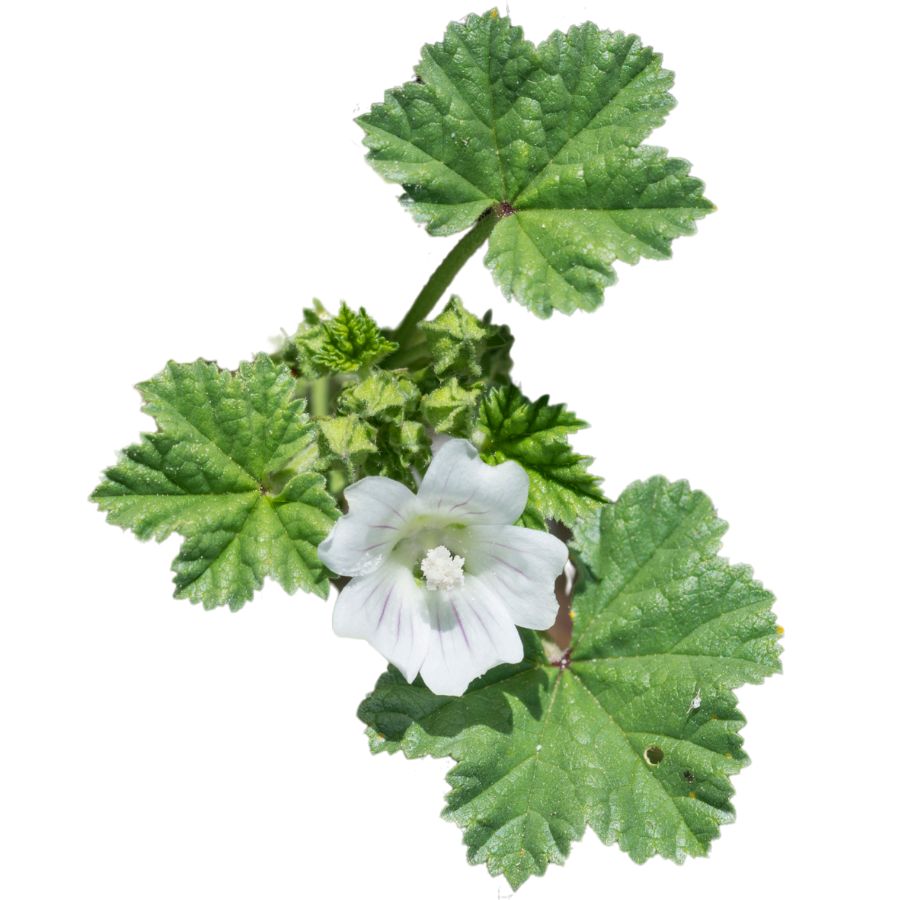
Mallow, often called common mallow or cheeseweed, grows low to the ground and spreads with round, crinkled leaves that look a bit like tiny lily pads. It produces small pale purple or pink flowers with five delicate petals, and the seed pods are shaped like little green wheels.
The leaves, flowers, and immature seed pods of mallow are all edible, offering a mild, slightly sweet flavor and a soft, somewhat mucilaginous texture. Some people add the leaves to salads, toss them into soups for thickening, or quickly sauté them with garlic for a simple side dish.
When gathering mallow, make sure you do not confuse it with young deadly nightshade plants, which can sometimes grow in similar weedy areas but have very different flower and fruit structures. Mallow is safe to eat, but it tends to absorb pollutants from the soil, so be cautious about harvesting from roadsides or contaminated areas.
An interesting thing about mallow is that it was traditionally used for soothing sore throats and irritated skin because of its natural slimy quality. If you are foraging for food and medicine, mallow is a versatile and easy plant to start with once you are confident in your identification.
Golden Currant (Ribes aureum)
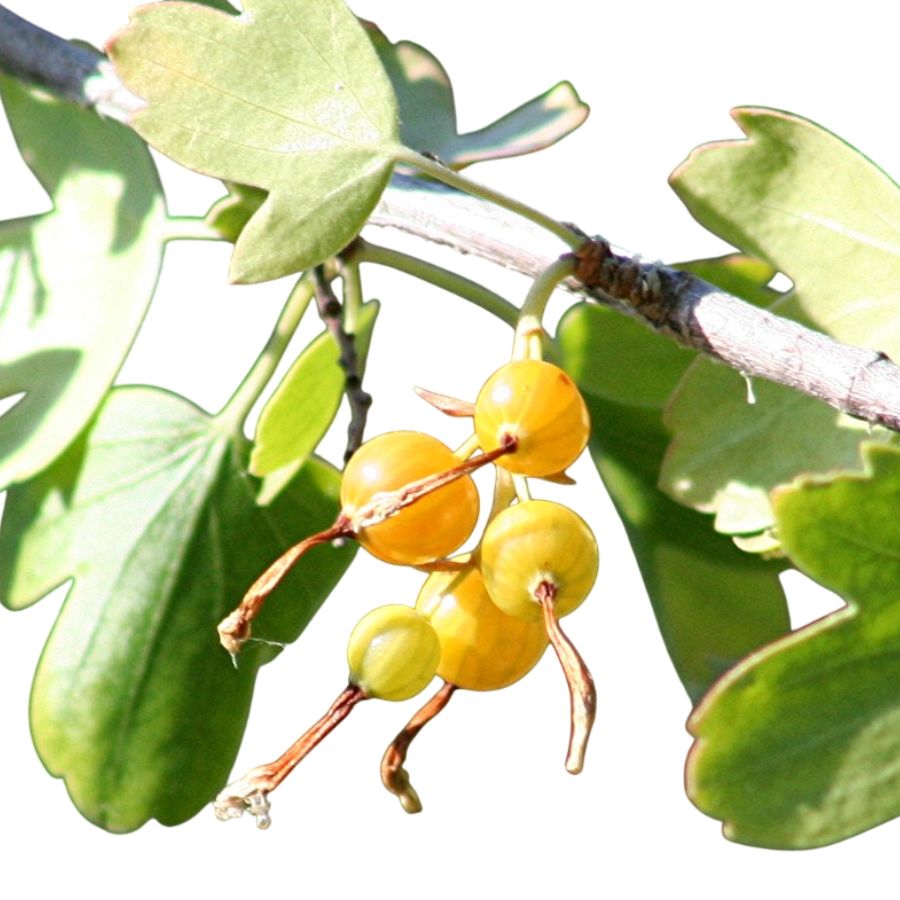
Golden currants produce small, round berries with smooth skin and a color range that includes golden yellow, red, and deep purple. Their flavor is tangy, slightly sweet, and develops a deeper complexity when cooked down.
The berries are edible raw, but you’ll probably want to use them in syrups, sauces, or dried into snacks. Some people dehydrate them like raisins, though they’re smaller and more tart.
Leaves are palmately lobed and lightly scented, which helps set golden currants apart from potentially toxic lookalikes like some ornamental currant hybrids. Those lookalikes often lack the same strong fragrance and have less pronounced lobing on the leaves.
Don’t eat the unripe berries in large amounts, as they can be harsh on the stomach. Fermenting the juice was a traditional method of preservation among various communities, adding a unique use to its culinary profile.
Shepherd’s Purse (Capsella bursa-pastoris)
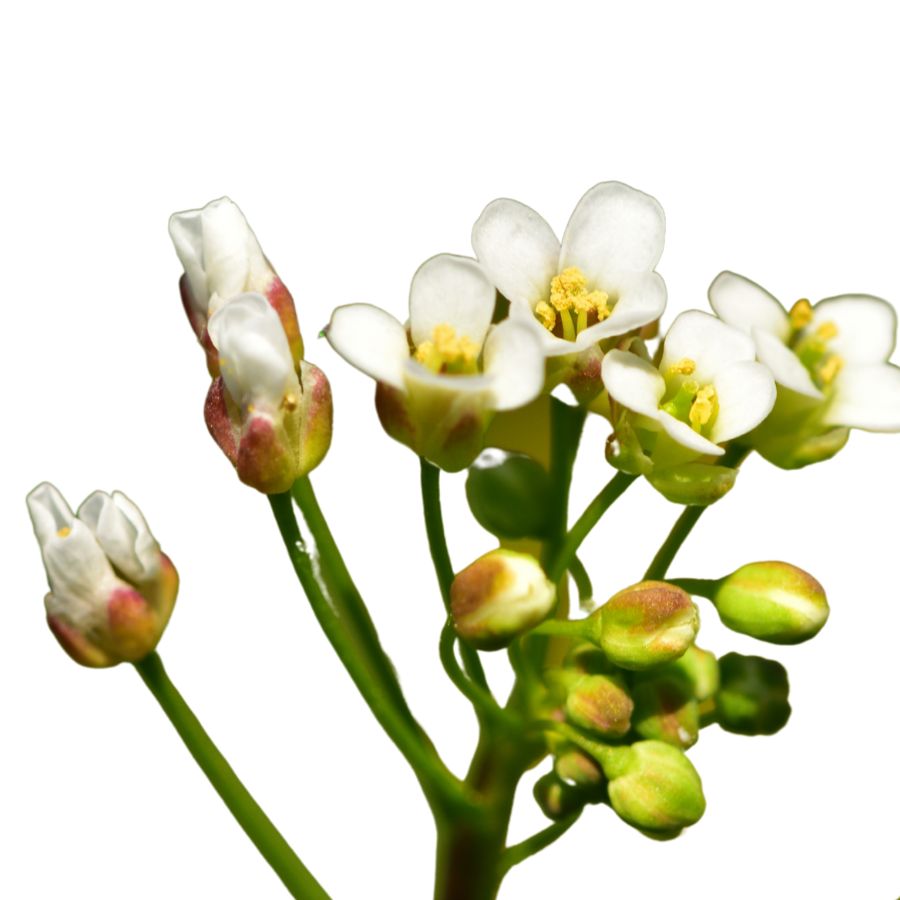
Shepherd’s purse grows low to the ground with small white flowers and flat, heart-shaped seed pods that hang beneath the leaves. You can eat the young leaves raw or cooked, but the seed pods have a spicier kick.
Some people mistake it for field pennycress, but pennycress has rounder seed pods and a more pungent smell. The leaves of shepherd’s purse are deeply lobed and often resemble dandelion leaves in shape.
Its flavor is mild and peppery, like a cross between mustard greens and arugula. You can toss the fresh leaves into salads or sauté them with garlic and oil.
The older leaves turn bitter and tough, so it’s better to use them early. Avoid harvesting near roadsides or disturbed soils, as the plant can pull up contaminants.
Sweet Clover (Melilotus officinalis)
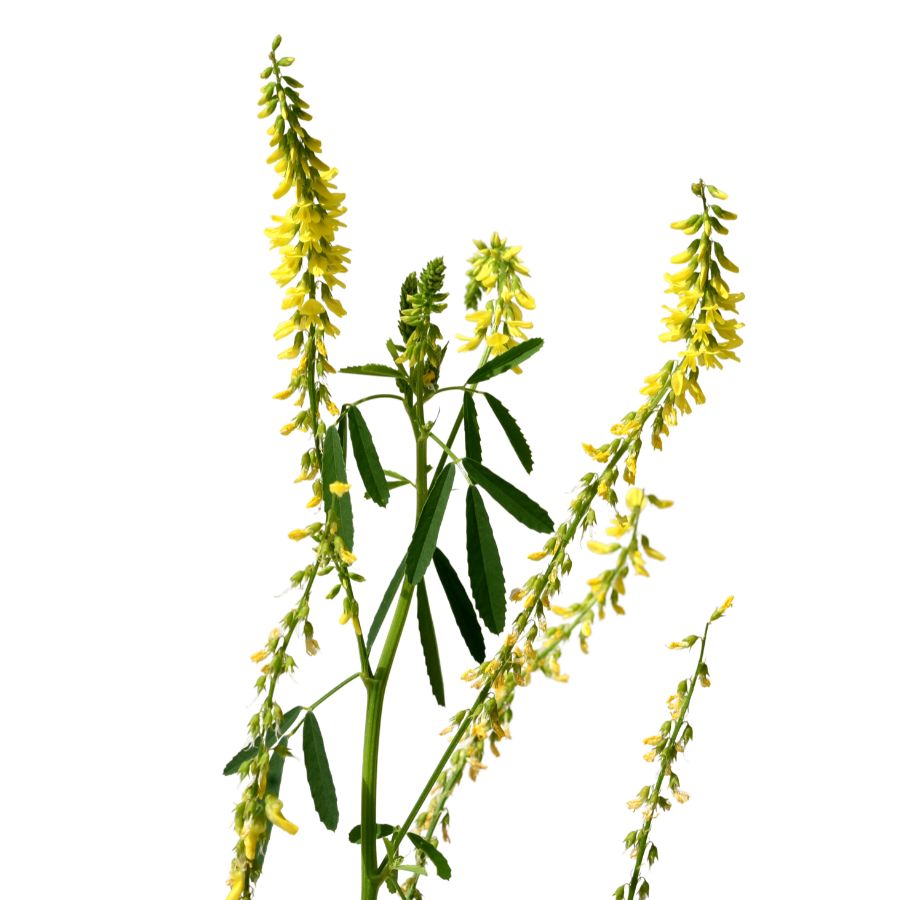
Sweet clover fills the air with a vanilla-like fragrance when dried, making it popular for tea and flavoring. This biennial plant grows to about two to five feet tall with small yellow flowers clustered on spikes and compound leaves consisting of three leaflets.
The flowers and young leaves can be used in small amounts to add flavor to salads. Sweet clover contains coumarin, which gives it a sweet smell but can be toxic in large amounts or when the plant becomes moldy.
Identify sweet clover by its three-parted leaves and sweet-smelling yellow flower spikes. It’s often found along roadsides and in fields. Don’t confuse it with regular clover or alfalfa, which have different flower structures. Traditional herbalists used sweet clover externally for inflammation and bruises.
The dried flowers make the most commonly used part for tea, but they should be used sparingly due to the coumarin content.
Field Mustard (Brassica rapa)
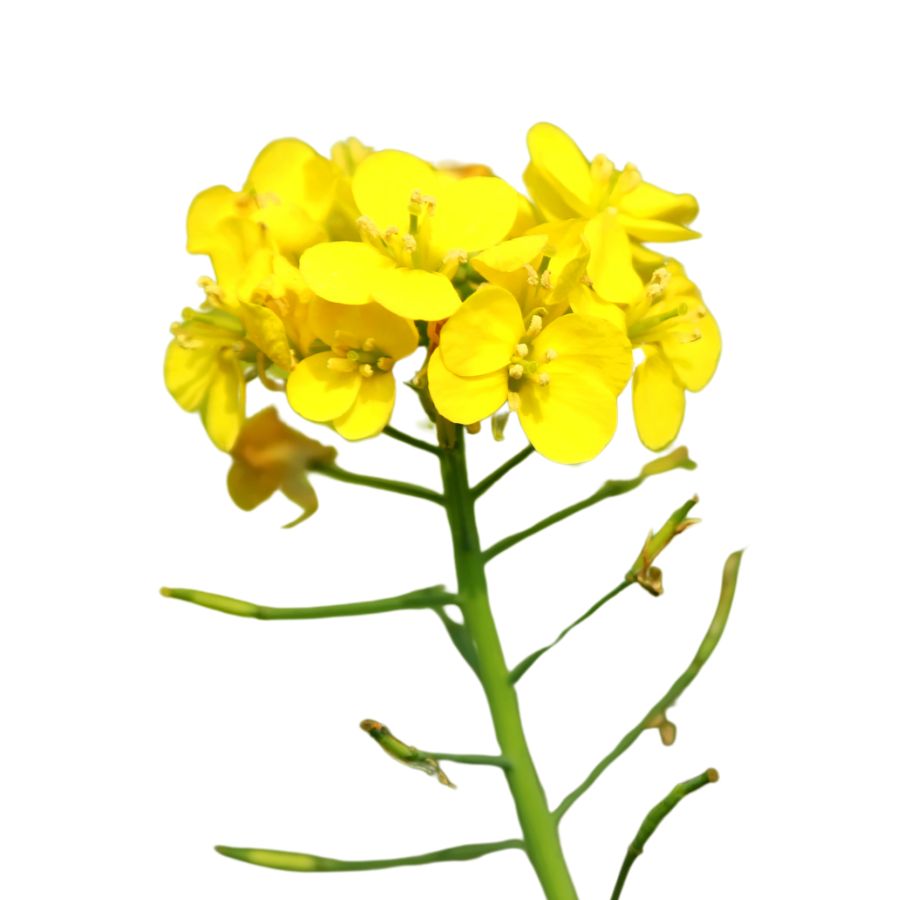
Field mustard’s bright yellow flowers blanket fields and roadways in early spring, creating stunning golden displays. This member of the cabbage family has lobed leaves that clasp the stem and produces seed pods that stand upright along the stem after flowering.
Every part of field mustard is edible. The young leaves make excellent greens for salads or cooking, tasting similar to turnip greens with a spicy kick. The unopened flower buds can be prepared like broccoli, while the yellow flowers add color and a mild mustard flavor to salads.
The seeds produce the mustard condiment we know from store shelves. Field mustard has no dangerous lookalikes within the mustard family, making it a safe choice for beginning foragers.
False Solomon’s Seal (Maianthemum racemosum)
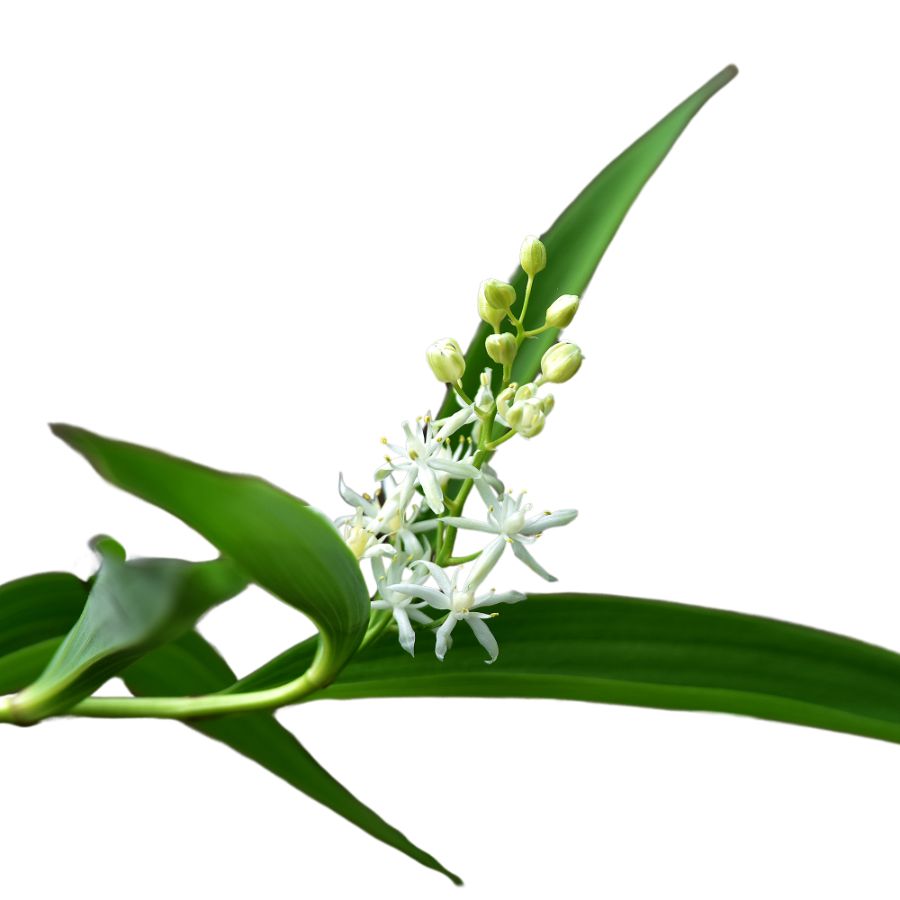
False Solomon’s Seal produces clusters of creamy white flowers at the tip of an arching stem, unlike true Solomon’s Seal which bears flowers underneath the stem. The plant grows in woodland settings, creating a graceful presence with its alternating oval leaves and height of one to three feet.
Identify this plant by its unbranched stem with parallel-veined leaves and terminal flower cluster that later develops into red berries. The young shoots can be harvested in spring and cooked like asparagus. The berries turn ruby red when ripe in late summer and have a mildly sweet taste.
Be careful not to confuse False Solomon’s Seal with lily-of-the-valley, which has similar leaves but produces bell-shaped flowers and highly toxic berries. Only the young shoots and ripe berries of False Solomon’s Seal are considered edible.
Native Americans used this plant medicinally for treating coughs and as a root poultice for burns. The shoots provide vitamin C and minerals when added to spring meals.
Evening Primrose (Oenothera biennis)
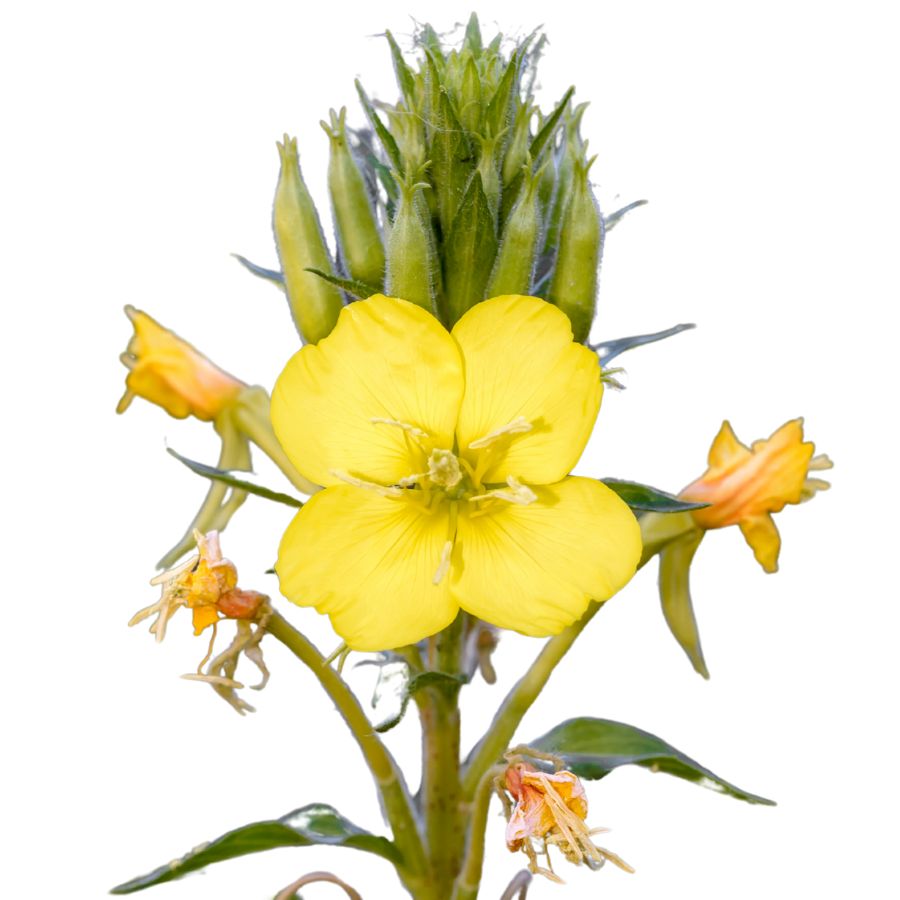
The bright yellow blooms of common evening primrose, or hog weed as it’s also called, only open in low light and tend to wilt by morning. It has a coarse stem and elongated leaves that spiral upward, with buds that cluster near the top.
Its root has a taste similar to salsify and works well roasted or baked. Flower buds and young leaves are sometimes boiled like spinach to reduce bitterness.
Some parts of the plant resemble helenium, which is not safe to eat—helenium leaves are narrower and more aromatic when crushed. The seeds of common evening primrose can be ground into a paste or flour-like mix for cooking.
Though many parts of the plant are used in food, the flower stalks get tough quickly and aren’t usually eaten. Stick with the first-year roots and early foliage for better flavor and texture.
Toxic Plants That Look Like Edible Plants
There are plenty of wild edibles to choose from, but some toxic native plants closely resemble them. Mistaking the wrong one can lead to severe illness or even death, so it’s important to know exactly what you’re picking.
Poison Hemlock (Conium maculatum)
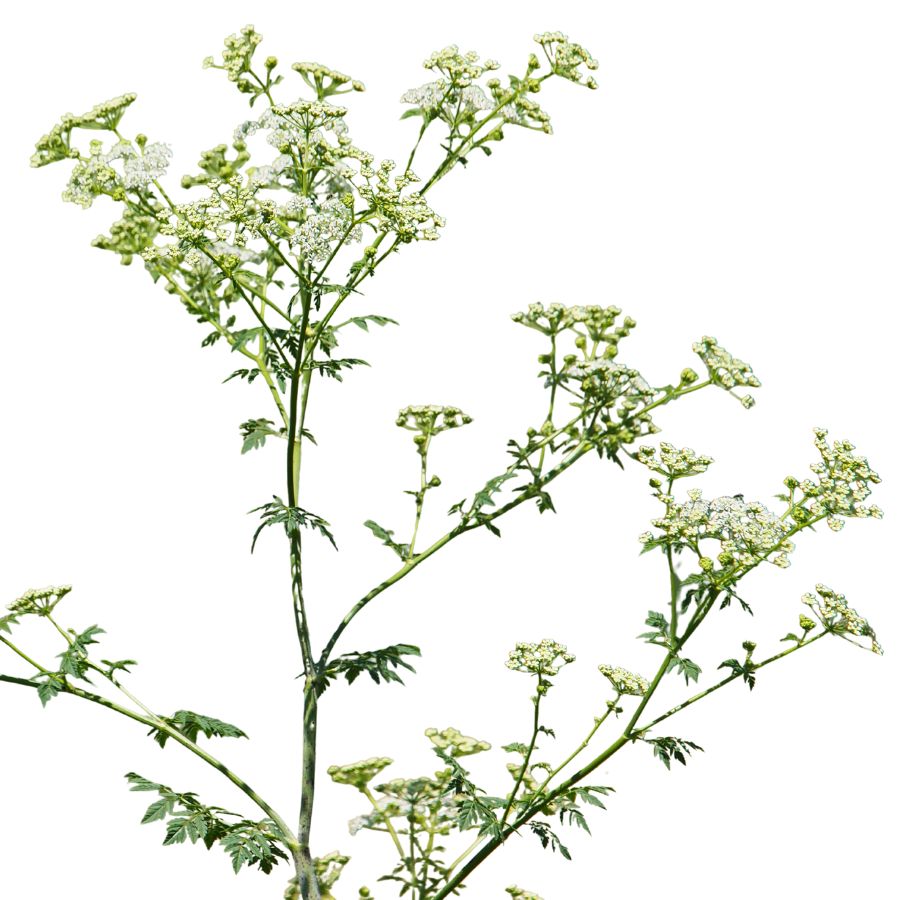
Often mistaken for: Wild carrot (Daucus carota)
Poison hemlock is a tall plant with lacy leaves and umbrella-like clusters of tiny white flowers. It has smooth, hollow stems with purple blotches and grows in sunny places like roadsides, meadows, and stream banks.
Unlike wild carrot, which has hairy stems and a dark central floret, poison hemlock has a musty odor and no flower center spot. It’s extremely toxic; just a small amount can be fatal, and even touching the sap can irritate the skin.
Water Hemlock (Cicuta spp.)
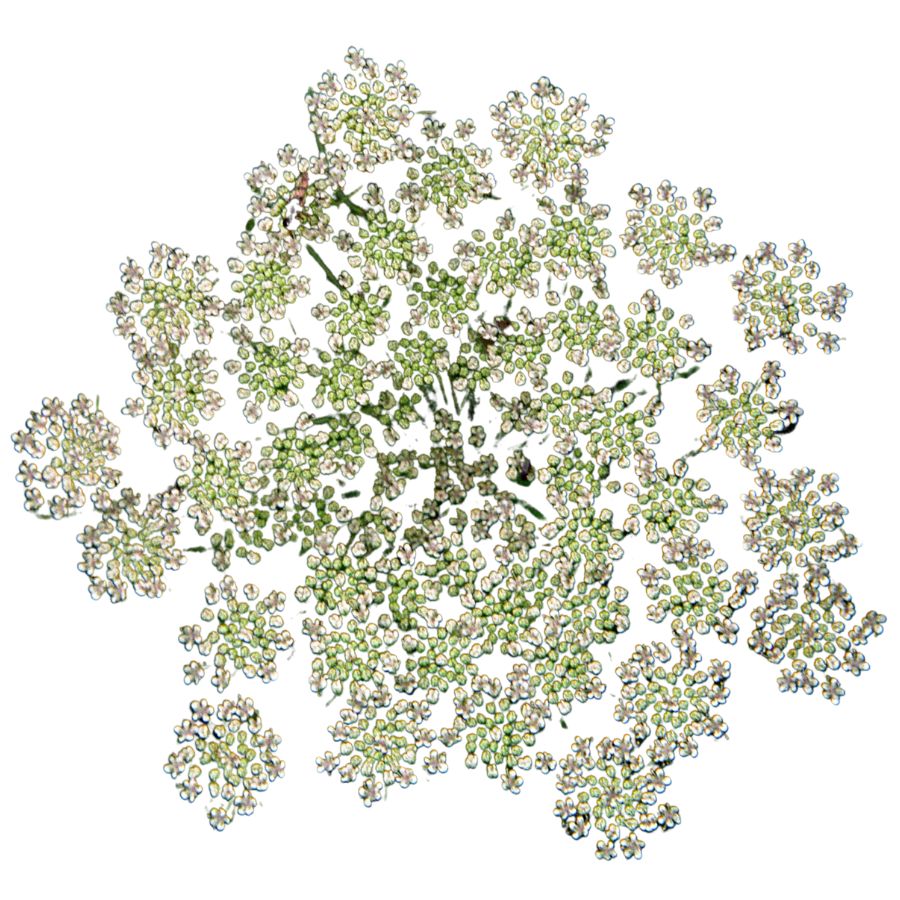
Often mistaken for: Wild parsnip (Pastinaca sativa) or wild celery (Apium spp.)
Water hemlock is a tall, branching plant with umbrella-shaped clusters of small white flowers. It grows in wet places like stream banks, marshes, and ditches, with stems that often show purple streaks or spots.
It can be confused with wild parsnip or wild celery, but its thick, hollow roots have internal chambers and release a yellow, foul-smelling sap when cut. Water hemlock is the most toxic plant in North America, and just a small amount can cause seizures, respiratory failure, and death.
False Hellebore (Veratrum viride)
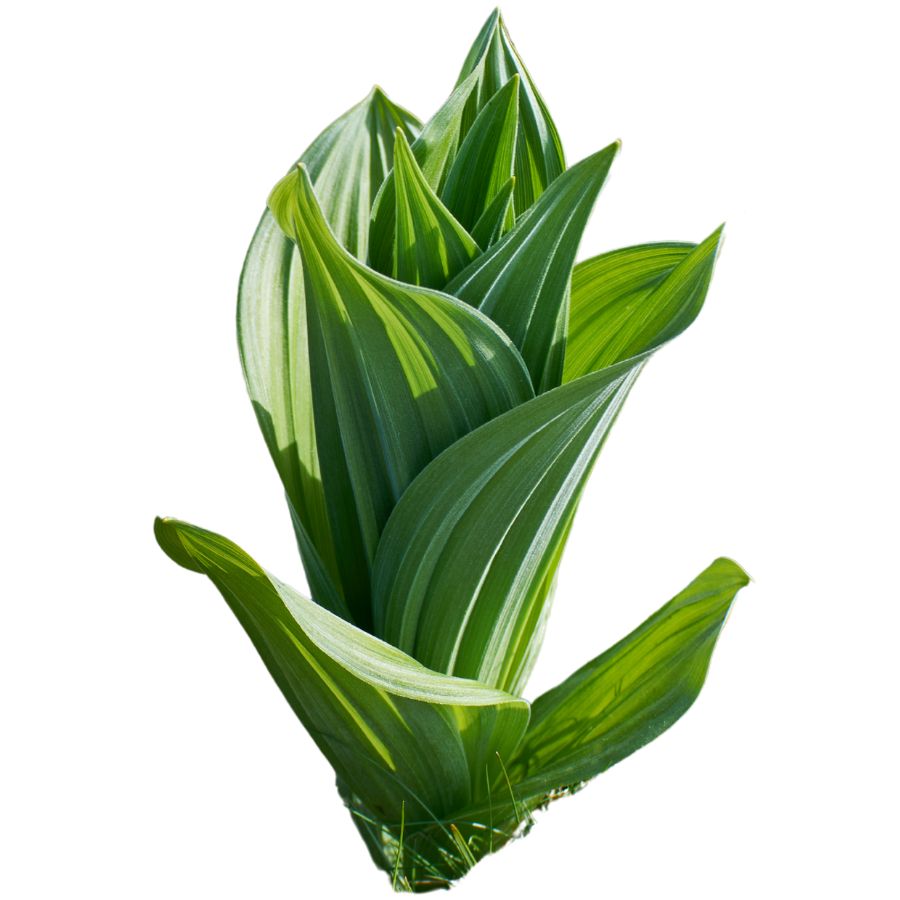
Often mistaken for: Ramps (Allium tricoccum)
False hellebore is a tall plant with broad, pleated green leaves that grow in a spiral from the base, often appearing early in spring. It grows in moist woods, meadows, and along streams.
It’s commonly mistaken for ramps, but ramps have a strong onion or garlic smell, while false hellebore is odorless and later grows a tall flower stalk. The plant is highly toxic, and eating any part can cause nausea, a slowed heart rate, and even death due to its alkaloids that affect the nervous and cardiovascular systems.
Death Camas (Zigadenus spp.)
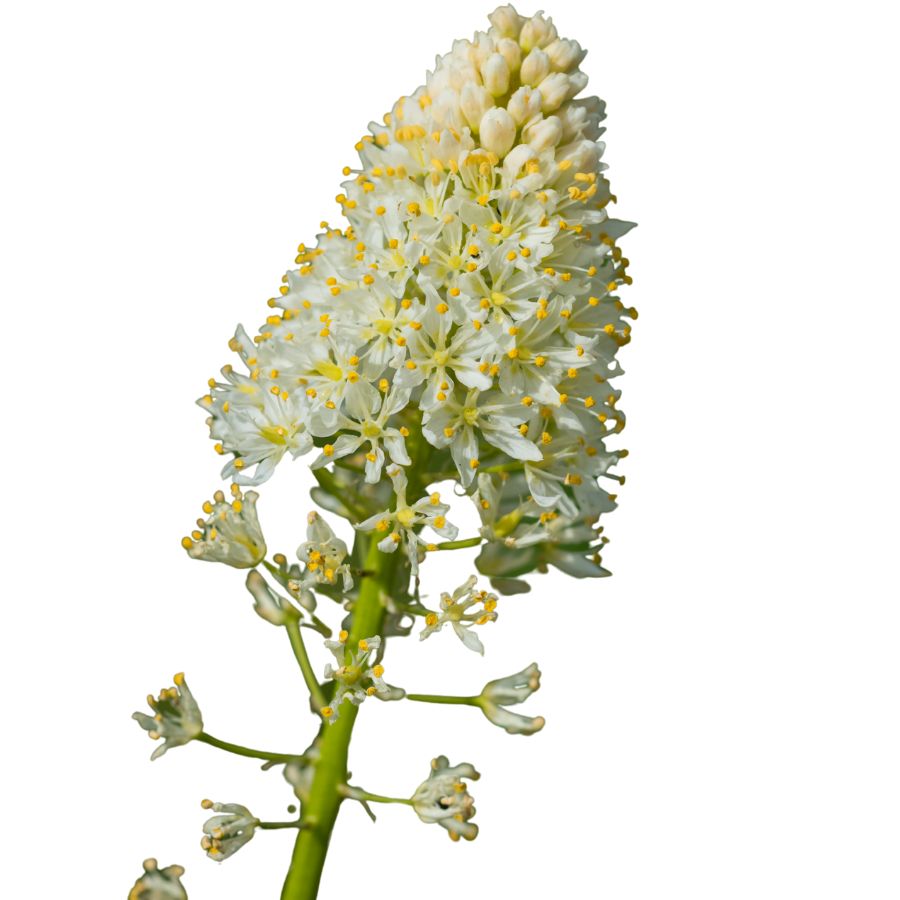
Often mistaken for: Wild onion or wild garlic (Allium spp.)
Death camas is a slender, grass-like plant that grows from underground bulbs and is found in open woods, meadows, and grassy hillsides. It has small, cream-colored flowers in loose clusters atop a tall stalk.
It’s often confused with wild onion or wild garlic due to their similar narrow leaves and habitats, but only Allium plants have a strong onion or garlic scent, while death camas has none. The plant is extremely poisonous, especially the bulbs, and even a small amount can cause nausea, vomiting, a slowed heartbeat, and potentially fatal respiratory failure.
Buckthorn Berries (Rhamnus spp.)
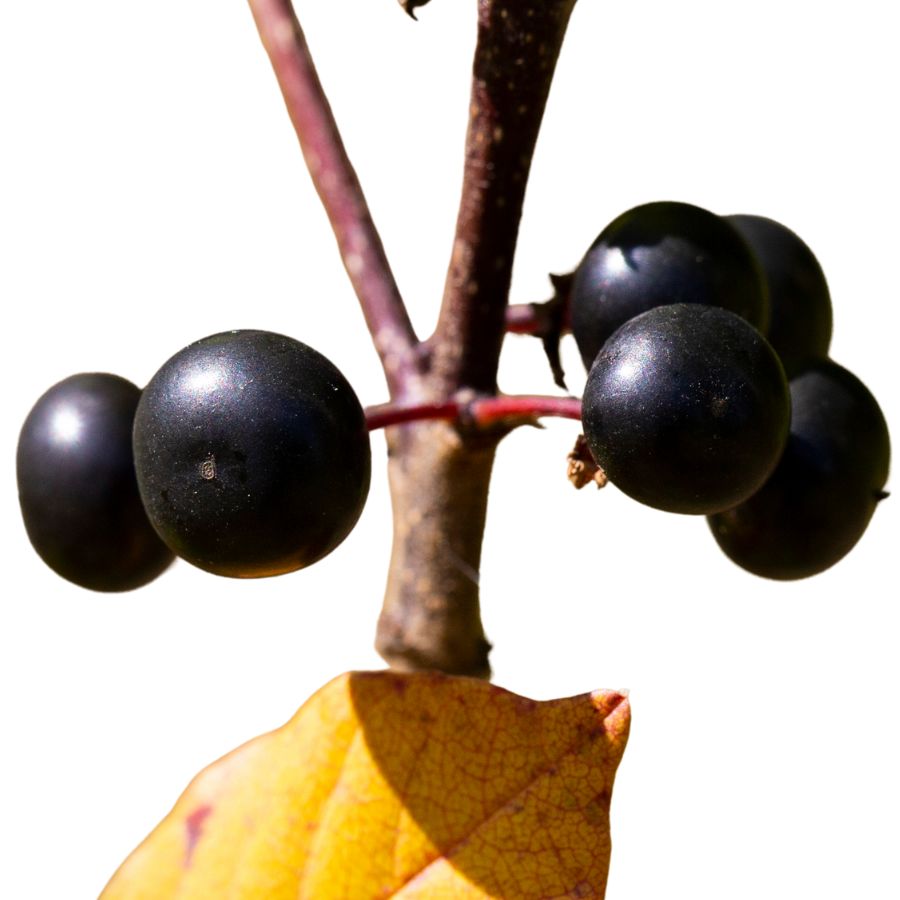
Often mistaken for: Elderberries (Sambucus spp.)
Buckthorn is a shrub or small tree often found along woodland edges, roadsides, and disturbed areas. It produces small, round berries that ripen to dark purple or black and usually grow in loose clusters.
These berries are sometimes mistaken for elderberries and other wild fruits, which also grow in dark clusters, but elderberries form flat-topped clusters on reddish stems while buckthorn berries are more scattered. Buckthorn berries are unsafe to eat as they contain compounds that can cause cramping, vomiting, and diarrhea, and large amounts may lead to dehydration and serious digestive problems.
Mayapple (Podophyllum peltatum)
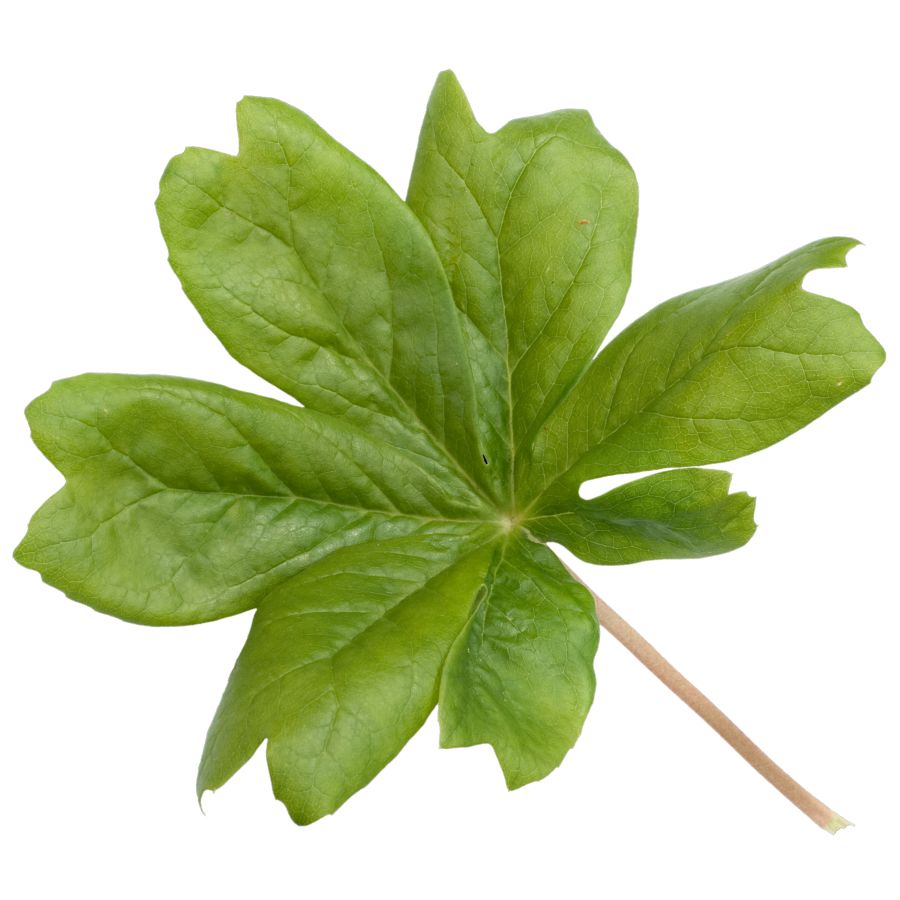
Often mistaken for: Wild grapes (Vitis spp.)
Mayapple is a low-growing plant found in shady forests and woodland clearings. It has large, umbrella-like leaves and produces a single pale fruit hidden beneath the foliage.
The unripe fruit resembles a small green grape, causing confusion with wild grapes, which grow in woody clusters on vines. All parts of the mayapple are toxic except the fully ripe, yellow fruit, which is only safe in small amounts. Eating unripe fruit or other parts can lead to nausea, vomiting, and severe dehydration.
Virginia Creeper (Parthenocissus quinquefolia)
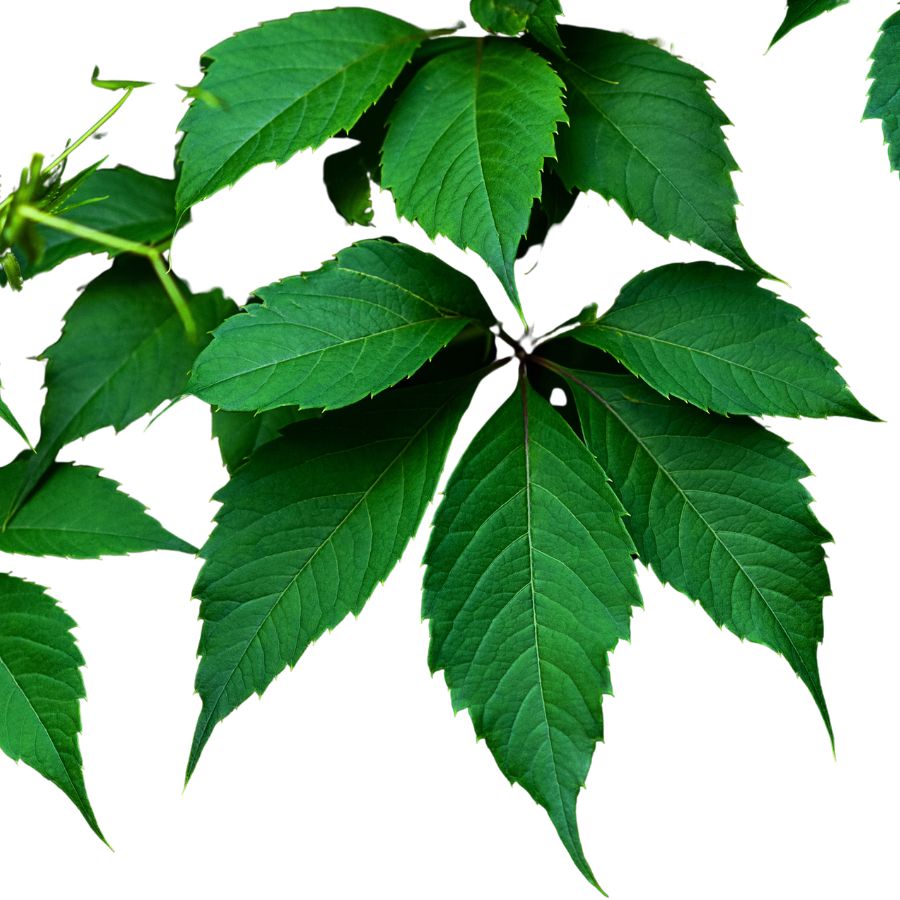
Often mistaken for: Wild grapes (Vitis spp.)
Virginia creeper is a fast-growing vine found on fences, trees, and forest edges. It has five leaflets per stem and produces small, bluish-purple berries from late summer to fall.
It’s often confused with wild grapes since both are climbing vines with similar berries, but grapevines have large, lobed single leaves and tighter fruit clusters. Virginia creeper’s berries are toxic to humans and contain oxalate crystals that can cause nausea, vomiting, and throat irritation.
Castor Bean (Ricinus communis)
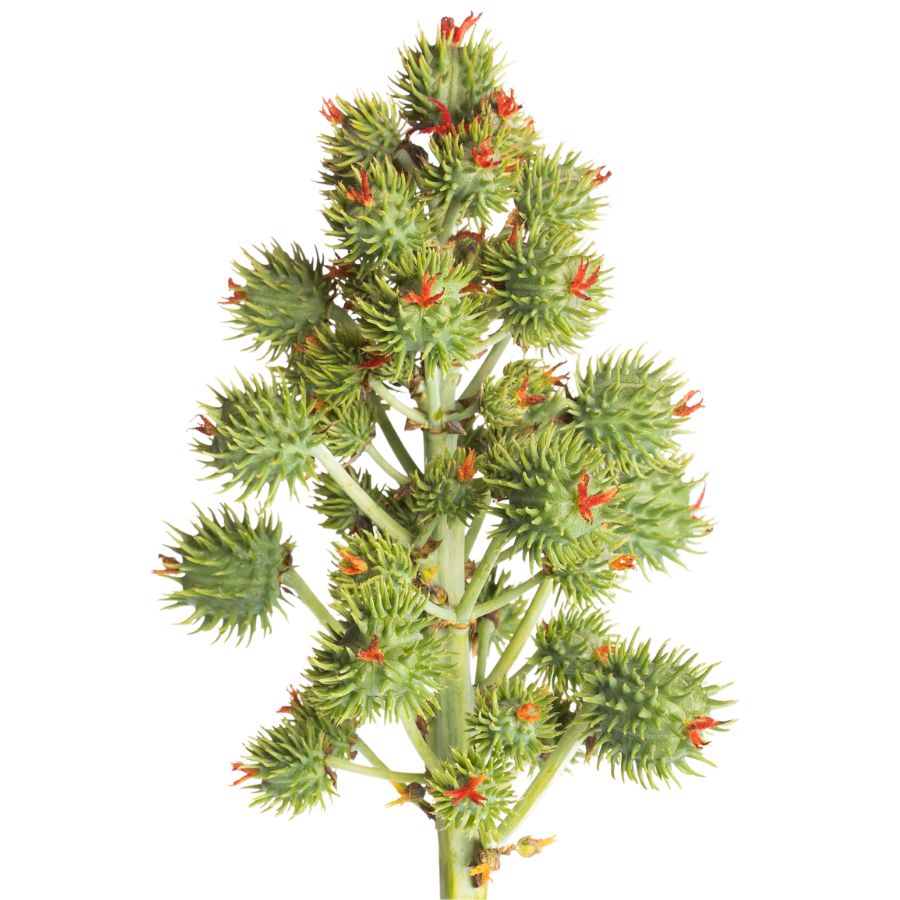
Often mistaken for: Wild rhubarb (Rumex spp. or Rheum spp.)
Castor bean is a bold plant with large, lobed leaves and tall red or green stalks, often found in gardens, along roadsides, and in disturbed areas in warmer regions in the US. Its red-tinged stems and overall size can resemble wild rhubarb to the untrained eye.
Unlike rhubarb, castor bean plants produce spiny seed pods containing glossy, mottled seeds that are extremely toxic. These seeds contain ricin, a deadly compound even in small amounts. While all parts of the plant are toxic, the seeds are especially dangerous and should never be handled or ingested.
A Quick Reminder
Before we get into the specifics about where and how to find these mushrooms, we want to be clear that before ingesting any wild mushroom, it should be identified with 100% certainty as edible by someone qualified and experienced in mushroom identification, such as a professional mycologist or an expert forager. Misidentification of mushrooms can lead to serious illness or death.
All mushrooms have the potential to cause severe adverse reactions in certain individuals, even death. If you are consuming mushrooms, it is crucial to cook them thoroughly and properly and only eat a small portion to test for personal tolerance. Some people may have allergies or sensitivities to specific mushrooms, even if they are considered safe for others.
The information provided in this article is for general informational and educational purposes only. Foraging for wild mushrooms involves inherent risks.
How to Get the Best Results Foraging
Safety should always come first when it comes to foraging. Whether you’re in a rural forest or a suburban greenbelt, knowing how to harvest wild foods properly is a key part of staying safe and respectful in the field.
Always Confirm Plant ID Before You Harvest Anything
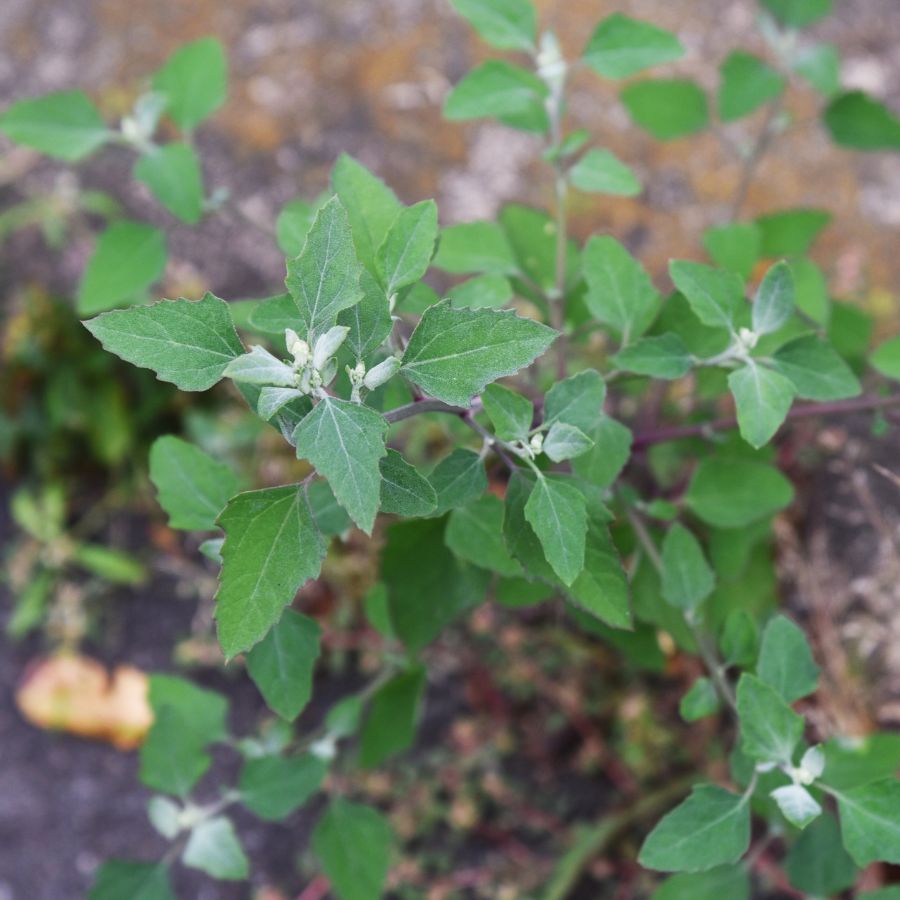
Knowing exactly what you’re picking is the most important part of safe foraging. Some edible plants have nearly identical toxic lookalikes, and a wrong guess can make you seriously sick.
Use more than one reliable source to confirm your ID, like field guides, apps, and trusted websites. Pay close attention to small details. Things like leaf shape, stem texture, and how the flowers or fruits are arranged all matter.
Not All Edible Plants Are Safe to Eat Whole
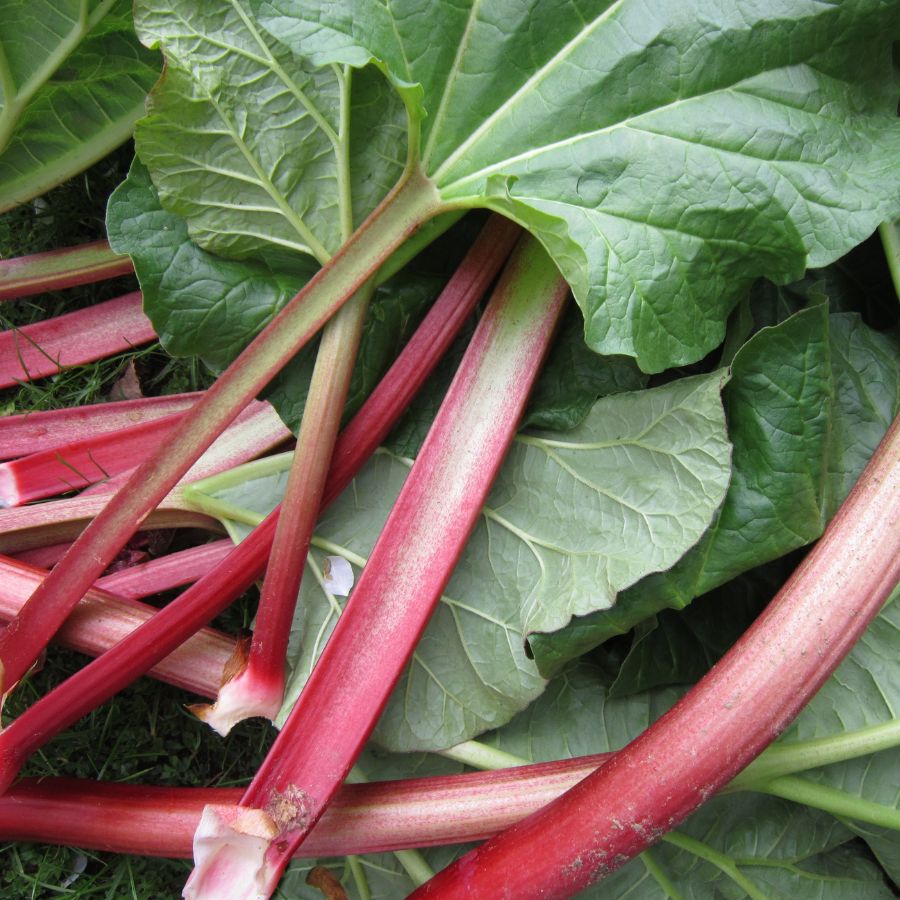
Just because a plant is edible doesn’t mean every part of it is safe. Some plants have leaves, stems, or seeds that can be toxic if eaten raw or prepared the wrong way.
For example, pokeweed is only safe when young and properly cooked, while elderberries need to be heated before eating. Rhubarb stems are fine, but the leaves are poisonous. Always look up which parts are edible and how they should be handled.
Avoid Foraging in Polluted or Contaminated Areas
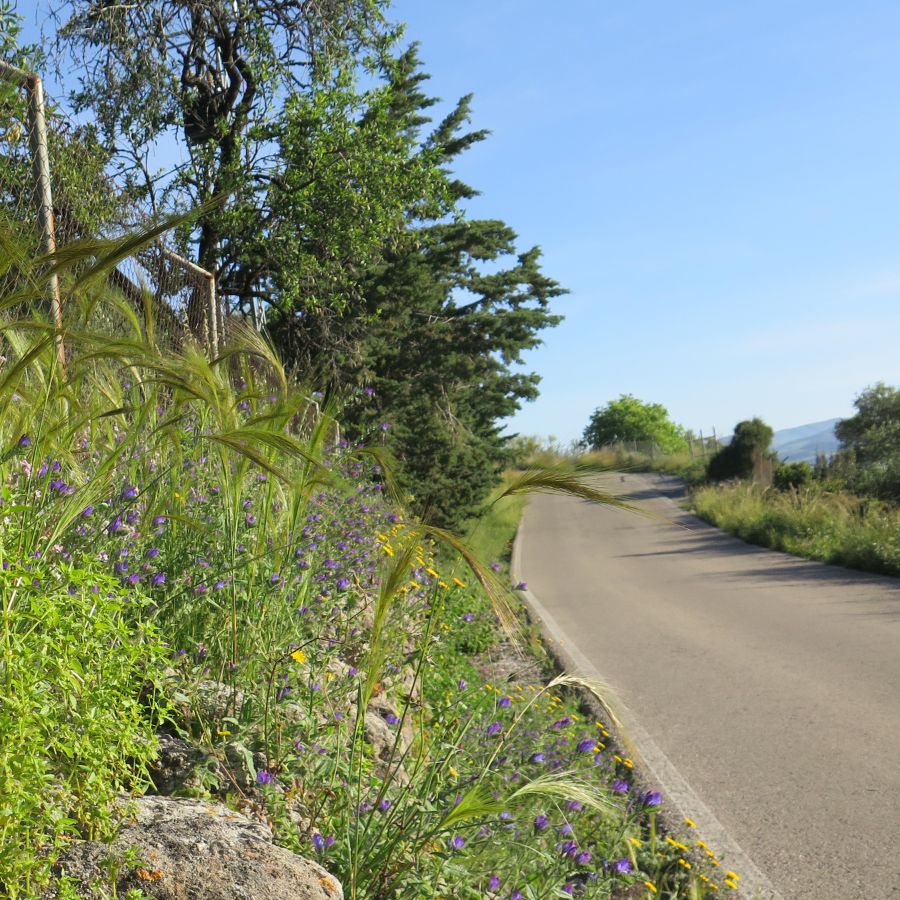
Where you forage matters just as much as what you pick. Plants growing near roads, buildings, or farmland might be coated in chemicals or growing in polluted soil.
Even safe plants can take in harmful substances from the air, water, or ground. Stick to clean, natural areas like forests, local parks that allow foraging, or your own yard when possible.
Don’t Harvest More Than What You Need
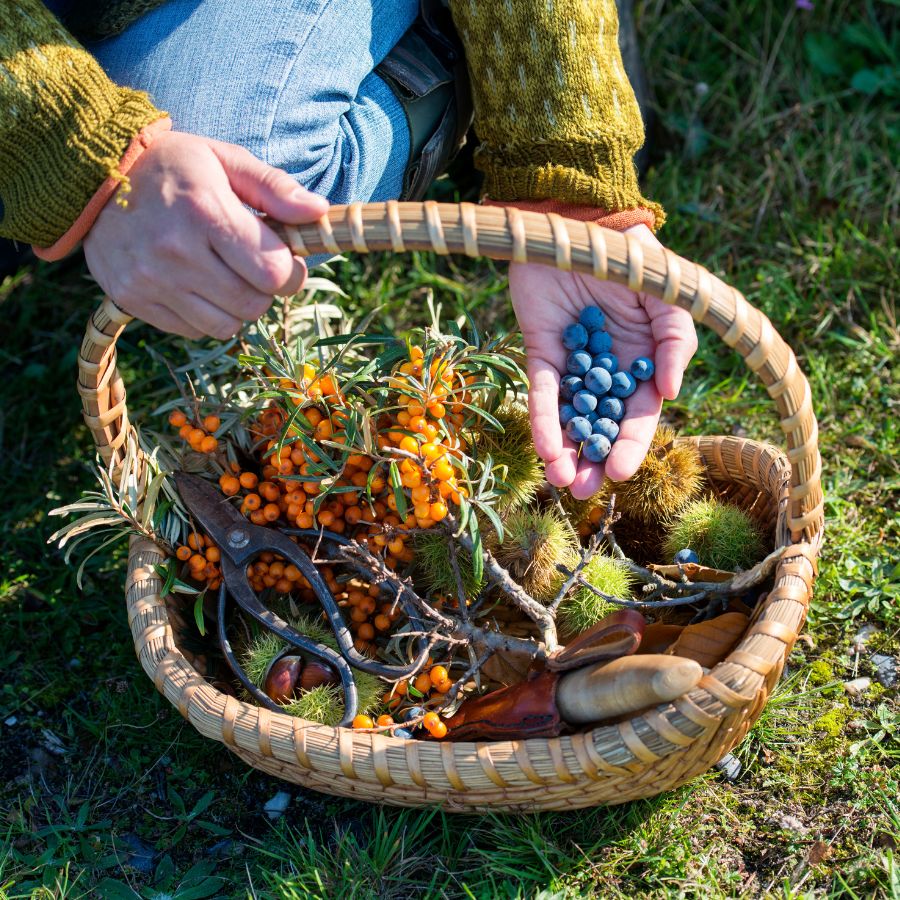
When you forage, take only what you plan to use. Overharvesting can hurt local plant populations and reduce future growth in that area.
Leaving plenty behind helps plants reproduce and supports wildlife that depends on them. It also ensures other foragers have a chance to enjoy the same resources.
Protect Yourself and Your Finds with Proper Foraging Gear

Having the right tools makes foraging easier and safer. Gloves protect your hands from irritants like stinging nettle, and a good knife or scissors lets you harvest cleanly without damaging the plant.
Use a basket or breathable bag to carry what you collect. Plastic bags hold too much moisture and can cause your greens to spoil before you get home.
This forager’s toolkit covers the essentials for any level of experience.
Watch for Allergic Reactions When Trying New Wild Foods

Even if a wild plant is safe to eat, your body might react to it in unexpected ways. It’s best to try a small amount first and wait to see how you feel.
Be extra careful with kids or anyone who has allergies. A plant that’s harmless for one person could cause a reaction in someone else.
Check Local Rules Before Foraging on Any Land
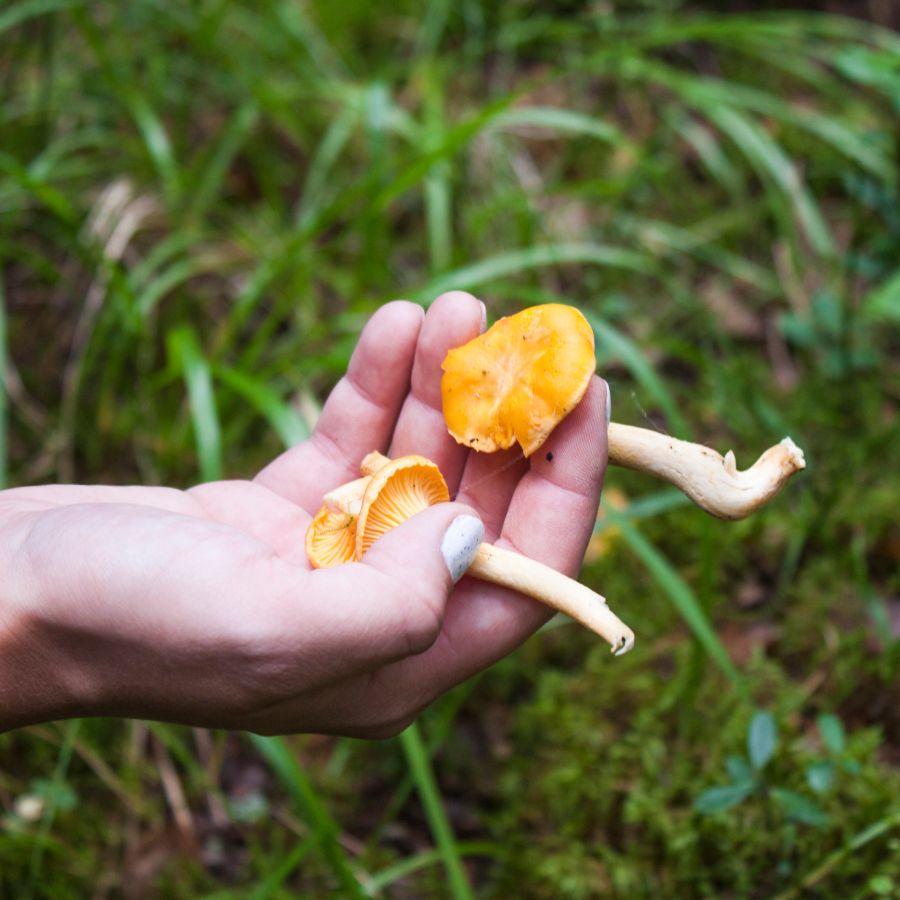
Before you start foraging, make sure you know the rules for the area you’re in. What’s allowed in one spot might be completely off-limits just a few miles away.
Some public lands permit limited foraging, while others, like national parks, usually don’t allow it at all. If you’re on private property, always get permission first.
Before you head out
Before embarking on any foraging activities, it is essential to understand and follow local laws and guidelines. Always confirm that you have permission to access any land and obtain permission from landowners if you are foraging on private property. Trespassing or foraging without permission is illegal and disrespectful.
For public lands, familiarize yourself with the foraging regulations, as some areas may restrict or prohibit the collection of mushrooms or other wild foods. These regulations and laws are frequently changing so always verify them before heading out to hunt. What we have listed below may be out of date and inaccurate as a result.
Where to Find Forageables in the State
There is a range of foraging spots where edible plants grow naturally and often in abundance:
| Plant | Locations |
|---|---|
| American Plum (Prunus americana) | – Black Hills National Forest – Custer State Park – Bear Butte State Park |
| Lamb’s Quarters (Chenopodium album) | – Sica Hollow State Park – Oakwood Lakes State Park – Big Sioux Recreation Area |
| Prairie Turnip (Pediomelum esculentum) | – Newton Hills State Park – Union Grove State Park – Lake Thompson Recreation Area |
| Wild Rose (Rosa woodsii) | – Lake Andes National Wildlife Refuge – Good Earth State Park – Hartford Beach State Park |
| Cattail (Typha spp.) | – Snake Creek Recreation Area – LaFramboise Island Nature Area – Spring Creek Recreation Area |
| Ground Cherry (Physalis longifolia) | – Shadehill Recreation Area – Fort Sisseton Historic State Park – Rocky Point Recreation Area |
| Jerusalem Artichoke (Helianthus tuberosus) | – West Whitlock Recreation Area – North Point Recreation Area – Roy Lake State Park |
| Wild Mint (Mentha arvensis) | – Little Moreau Recreation Area – Lake Vermillion Recreation Area – Pease Creek Recreation Area |
| Dandelion (Taraxacum officinale) | – Walker’s Point Recreation Area – Lake Poinsett Recreation Area – Angostura Recreation Area |
| Bur Oak Acorn (Quercus macrocarpa) | – Spirit Mound Historic Prairie – Lewis and Clark Recreation Area – Buffalo Gap National Grassland |
| Wild Onion (Allium canadense) | – Oakwood Bottoms Wildlife Area – Brule Bottom State Game Production Area – Iron Creek Lake Area |
| Purslane (Portulaca oleracea) | – Oahe Downstream Recreation Area – Minnekahata Valley – Lake Hiddenwood Recreation Area |
| Chokecherry (Prunus virginiana) | – Sand Lake National Wildlife Refuge – Fort Randall Dam Area – Split Rock Creek Park |
| Amaranth (Amaranthus retroflexus) | – Pelican Lake Recreation Area – Lake Alvin Recreation Area – Lead-Deadwood Trail System |
| Plantain (Plantago major) | – Badlands National Park – Big Stone Island Nature Area – Lake Herman State Park |
| Buffalo Berry (Shepherdia argentea) | – Rochford Area Black Hills – Lake Cochrane Recreation Area – Beaver Creek Nature Area |
| Stinging Nettle (Urtica dioica) | – Brush Lake State Wildlife Area – Buryanek Recreation Area – East Vermillion Lake Area |
| Sunflower (Helianthus annuus) | – Farm Island Recreation Area – French Creek Natural Area – Indian Creek Recreation Area |
| Wild Grape (Vitis riparia) | – Lake Campbell Public Access – Lake Madison Public Land – Little River Game Production Area |
| Wild Bergamot (Monarda fistulosa) | – Long Lake Recreation Area – Mallard Slough State Game Area – McNenny State Fish Hatchery Area |
| Black Walnut (Juglans nigra) | – Oak Lake Field Station Area – Pickerel Lake Recreation Area – Platte Creek Recreation Area |
| Wood Sorrel (Oxalis stricta) | – Prairie Trail State Park – Rapid Creek Trail Area – Raven Creek Public Hunting Area |
| Common Mallow (Malva neglecta) | – Reva Gap Campground Region – Rush Lake Game Production Area – South Scalp Creek Area |
| Elderberry (Sambucus canadensis) | – Spearfish Canyon Nature Area – Split Rock Trailhead Region – Summit Nature Park Area |
| Sweet Clover (Melilotus officinalis) | – Timber Lake Prairie Region – Turkey Ridge Creek Area – Upper Spring Creek Recreation Area |
| Golden Currant (Ribes aureum) | – White River Overlook Area – Willow Lake State Park – Wind Cave National Park |
| Field Mustard (Brassica rapa) | – Yankton Trail Park – Ziebach Prairie Reserve – Rapid City Greenway Trail |
| Red Clover (Trifolium pratense) | – Terry Peak Recreation Area – Deerfield Lake Area – Little Elk Creek Trailhead |
| Prickly Pear (Opuntia fragilis) | – Crow Peak Trailhead – Belle Fourche Reservoir – Vanocker Canyon Area |
| Wild Strawberry (Fragaria virginiana) | – Lake Henry Public Area – Grass Lake Public Access Area – Newell Lake Recreation Area |
| Horseradish (Armoracia rusticana) | – Stockade Lake Recreation Area – Sheridan Lake Recreation Area – Reptile Gardens Forest Edge |
| Yarrow (Achillea millefolium) | – Cascade Falls Picnic Area – Cold Brook Canyon Area – Mina Lake Recreation Area |
| Goosefoot (Chenopodium berlandieri) | – Enemy Creek Game Area – Tabor Lakes Public Area – Whetstone Bay Recreation Area |
| Hickory Nuts (Carya spp.) | – Marindahl Lake Area – Sioux River Game Area – Kirk Trail System |
| Wild Parsnip (Pastinaca sativa) | – Indian Creek Trailhead – Red Canyon Road Area – Oak Draw Wildlife Area |
| Wild Licorice (Glycyrrhiza lepidota) | – Castle Creek Forest Trail – Little Spearfish Trailhead – Norbeck Wildlife Preserve |
| Arrowleaf Balsamroot (Balsamorhiza sagittata) | – Forest Service Road 8042 Area – French Creek Horse Camp Area – Hay Canyon Trail Region |
| Fireweed (Chamerion angustifolium) | – Box Elder Creek Region – Stagebarn Canyon Area – Horse Thief Lake Area |
| Wintercress (Barbarea vulgaris) | – Hell Canyon Trailhead – Elk Mountain Campground Area – French Creek Trailhead |
| Blue Vervain (Verbena hastata) | – South Boxelder Trailhead – Grizzly Bear Creek Trailhead – Galena Trail System |
| Meadow Garlic (Allium canadense var. canadense) | – Whitetail Peak Public Access – Beaver Tail Trailhead – Hay Canyon Trail Region |
| Wild Asparagus (Asparagus officinalis) | – Marindahl Lake Area – Castle Creek Forest Trail – Box Elder Creek Region |
| False Solomon’s Seal (Maianthemum racemosum) | – Deerfield Lake Area – Little Spearfish Trailhead – Spirit Mound Historic Prairie |
| Evening Primrose (Oenothera biennis) | – Elk Mountain Campground Area – Cold Brook Canyon Area – Snake Creek Recreation Area |
| Shepherd’s Purse (Capsella bursa-pastoris) | – Terry Peak Recreation Area – Spearfish Canyon Nature Area – Belle Fourche Reservoir |
Peak Foraging Seasons
Different edible plants grow at different times of year, depending on the season and weather. Timing your search makes all the difference.
Spring
Spring brings a fresh wave of wild edible plants as the ground thaws and new growth begins:
| Plant | Months | Best Weather Conditions |
|---|---|---|
| Dandelion (Taraxacum officinale) | March–May | cool, damp meadows and open fields |
| Wild Asparagus (Asparagus officinalis) | April–May | sunny edges of fields after rain |
| Stinging Nettle (Urtica dioica) | April–May | moist, shaded forest edges |
| Lamb’s Quarters (Chenopodium album) | May | sunny areas with loose, disturbed soil |
| Meadow Garlic (Allium canadense var. canadense) | April–May | damp meadows or stream banks |
| Wild Onion (Allium canadense) | April–May | moist woodland or prairie edges |
| Shepherd’s Purse (Capsella bursa-pastoris) | March–May | cool fields and disturbed ground |
| Chickweed (Stellaria media) | March–May | shaded garden edges and moist soil |
| Wood Sorrel (Oxalis stricta) | May–September | shady garden edges and grassy patches |
| Golden Currant (Ribes aureum) | May–June | sunny thickets and prairie edges |
| Field Mustard (Brassica rapa) | May–June | open fields and disturbed soil |
| Arrowleaf Balsamroot (Balsamorhiza sagittata) | May–June | dry slopes and open woodlands |
| False Solomon’s Seal (Maianthemum racemosum) | May–June | moist deciduous forests |
| Wintercress (Barbarea vulgaris) | April–June | damp fields and streambanks |
| Red Clover (Trifolium pratense) | May–August | meadows, pastures and field borders |
Summer
Summer is a peak season for foraging, with fruits, flowers, and greens growing in full force:
| Plant | Months | Best Weather Conditions |
|---|---|---|
| Wild Strawberry (Fragaria virginiana) | June–July | sunny hillsides and woodland edges |
| Wild Rose (Rosa woodsii) | June–July | sunny meadows and open prairies |
| Buffalo Berry (Shepherdia argentea) | June–August | dry, sunny hillsides and plains |
| Amaranth (Amaranthus retroflexus) | July–September | disturbed soils in sunny areas |
| Purslane (Portulaca oleracea) | June–August | hot, dry gardens and trailsides |
| Plantain (Plantago major) | June–August | moist compacted soils in fields or paths |
| Black Walnut (Juglans nigra) | July–August | riparian zones with deep soil |
| Wild Grape (Vitis riparia) | July–August | sunny thickets or fence lines |
| Wild Mint (Mentha arvensis) | June–August | moist streambanks and wet meadows |
| Wild Bergamot (Monarda fistulosa) | July–August | sunny prairies and open woods |
| Fireweed (Chamerion angustifolium) | June–August | burned or disturbed forest sites |
| Blue Vervain (Verbena hastata) | July–September | moist meadows and ditches |
Fall
As temperatures drop, many edible plants shift underground or produce their last harvests:
| Plant | Months | Best Weather Conditions |
|---|---|---|
| Chokecherry (Prunus virginiana) | August–September | sunny hillsides and woodland borders |
| Jerusalem Artichoke (Helianthus tuberosus) | September–October | sunny riverbanks and fields |
| Bur Oak Acorn (Quercus macrocarpa) | September–October | oak groves with dry understory |
| Hickory Nuts (Carya spp.) | September–October | upland hardwood forests |
| Prairie Turnip (Pediomelum esculentum) | August–September | dry open prairie soil |
| Evening Primrose (Oenothera biennis) | September–October | sunny roadsides and dry fields |
| Ground Cherry (Physalis longifolia) | August–September | sandy or dry grasslands |
| Elderberry (Sambucus canadensis) | August–September | moist ditches and woodland edges |
| American Plum (Prunus americana) | August–September | sunny woodland edges and open prairies |
| Prickly Pear (Opuntia fragilis) | July–September | rocky hillsides and dry plains |
| Wild Licorice (Glycyrrhiza lepidota) | August–September | open prairie and sandy areas |
| Sunflower (Helianthus annuus) | August–October | dry, sunny fields and disturbed ground |
Winter
Winter foraging is limited but still possible, with hardy plants and preserved growth holding on through the cold:
| Plant | Months | Best Weather Conditions |
|---|---|---|
| Horseradish (Armoracia rusticana) | November–February | loose, well-drained garden soil |
| Jerusalem Artichoke (Helianthus tuberosus) | October–February | frozen or thawed riverbanks |
| Cattail (Typha spp.) | November–February | shallow water margins and marshy banks |
| Wild Parsnip (Pastinaca sativa) | November–January | frozen or cold open fields |
| Common Mallow (Malva neglecta) | November–December | low-growing near urban edges |
| Yarrow (Achillea millefolium) | November–January | frozen meadows and grasslands |
| Goosefoot (Chenopodium berlandieri) | November | dry prairies and abandoned fields |
| Sweet Clover (Melilotus officinalis) | December–February | road edges and disturbed fields |
One Final Disclaimer
The information provided in this article is for general informational and educational purposes only. Foraging for wild plants and mushrooms involves inherent risks. Some wild plants and mushrooms are toxic and can be easily mistaken for edible varieties.
Before ingesting anything, it should be identified with 100% certainty as edible by someone qualified and experienced in mushroom and plant identification, such as a professional mycologist or an expert forager. Misidentification can lead to serious illness or death.
All mushrooms and plants have the potential to cause severe adverse reactions in certain individuals, even death. If you are consuming foraged items, it is crucial to cook them thoroughly and properly and only eat a small portion to test for personal tolerance. Some people may have allergies or sensitivities to specific mushrooms and plants, even if they are considered safe for others.
Foraged items should always be fully cooked with proper instructions to ensure they are safe to eat. Many wild mushrooms and plants contain toxins and compounds that can be harmful if ingested.

